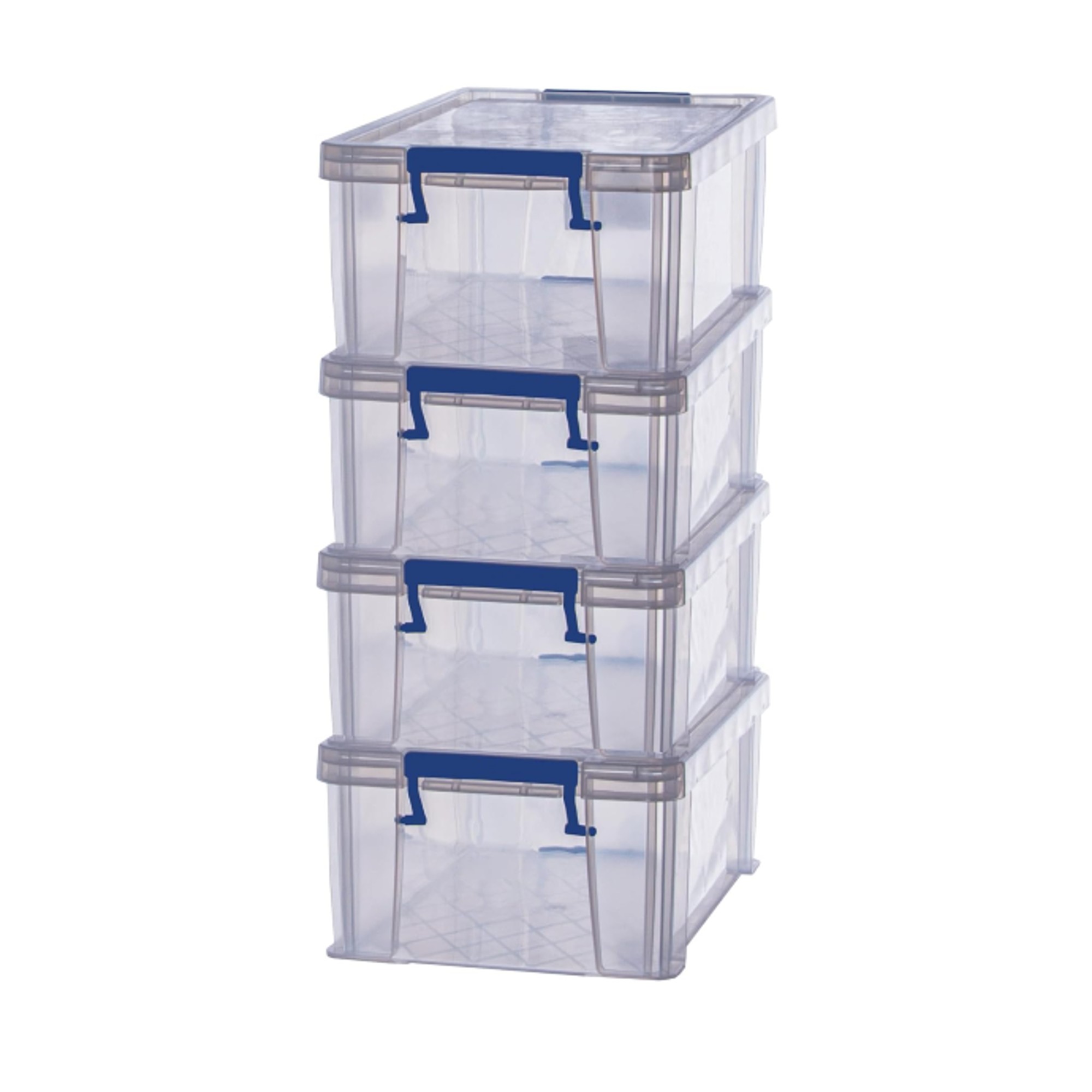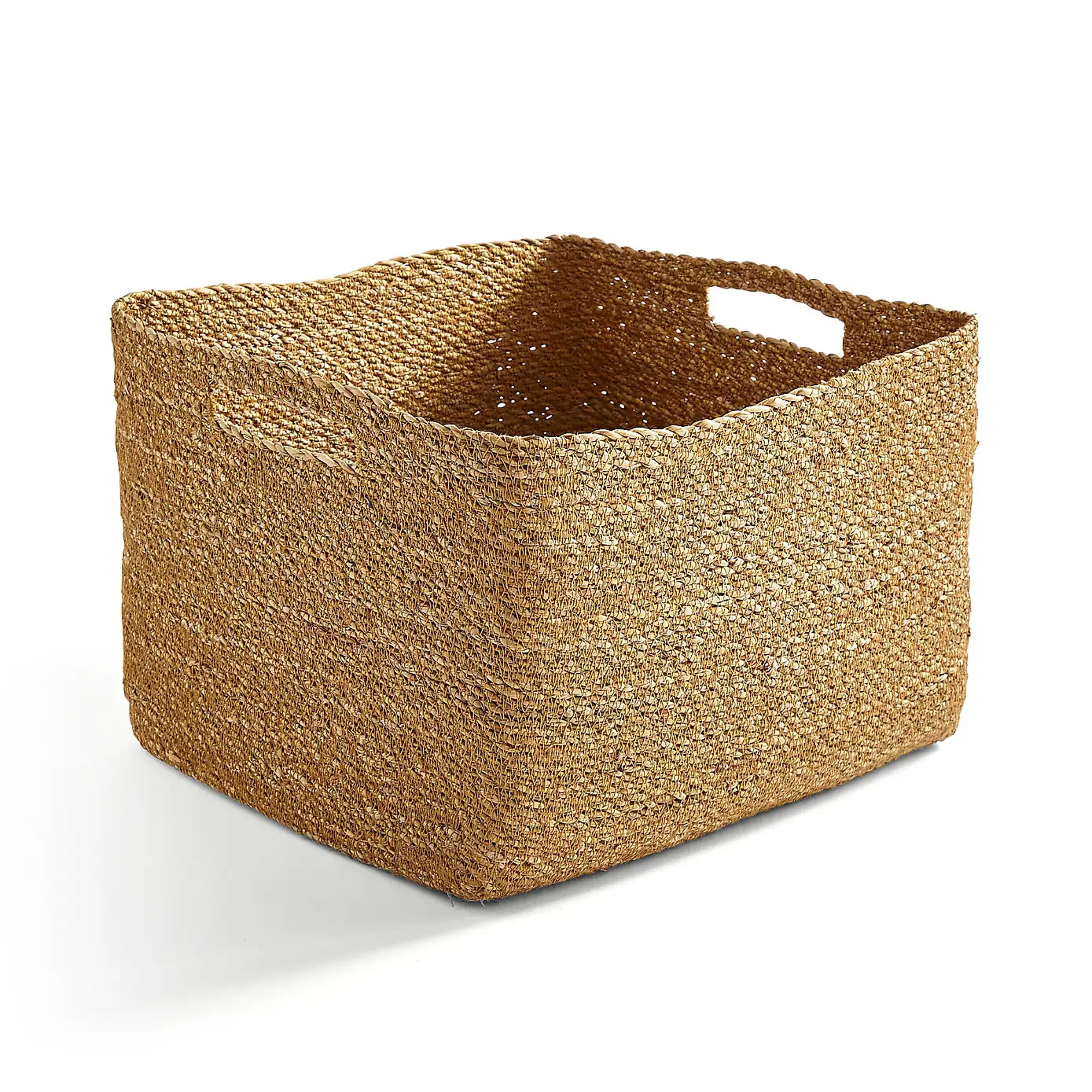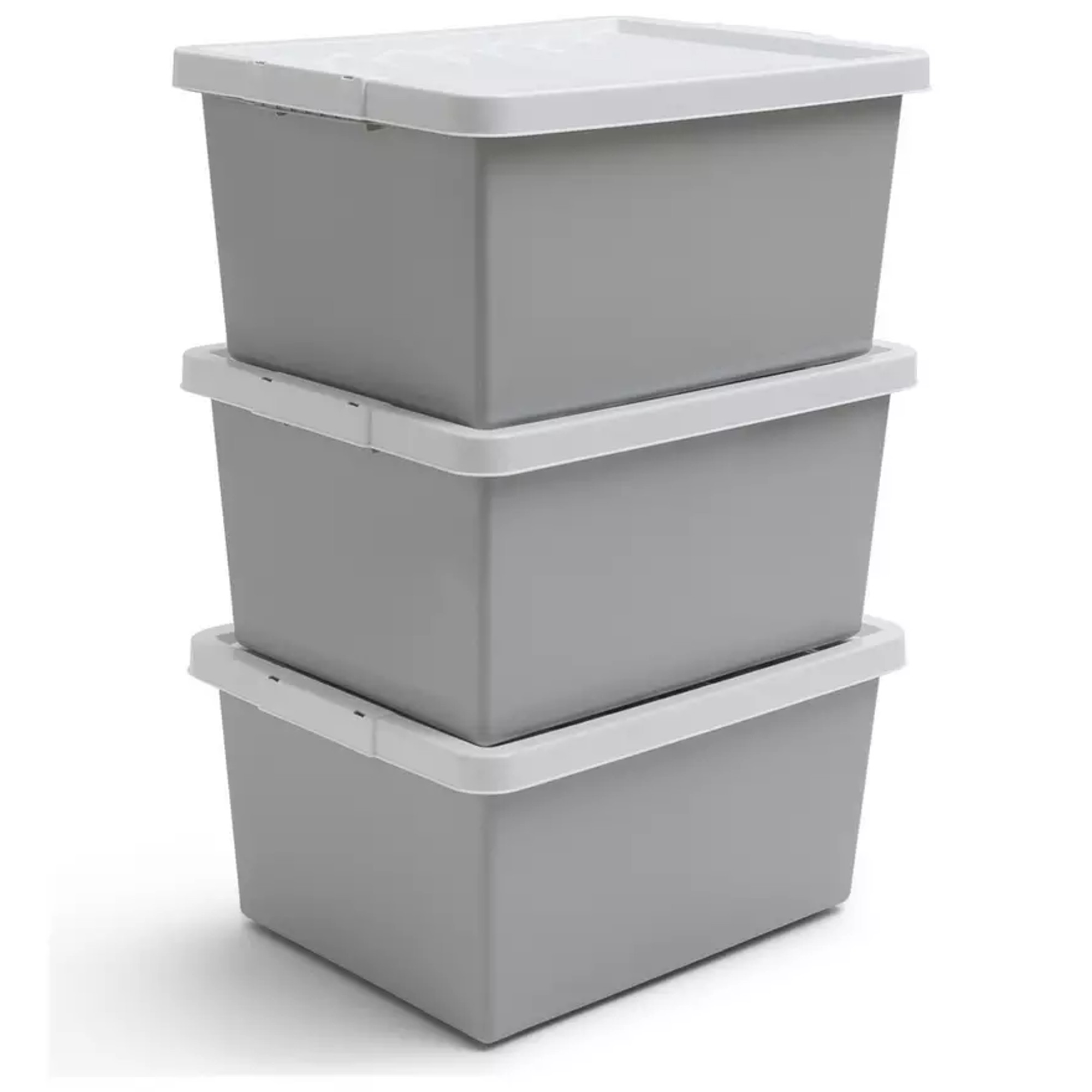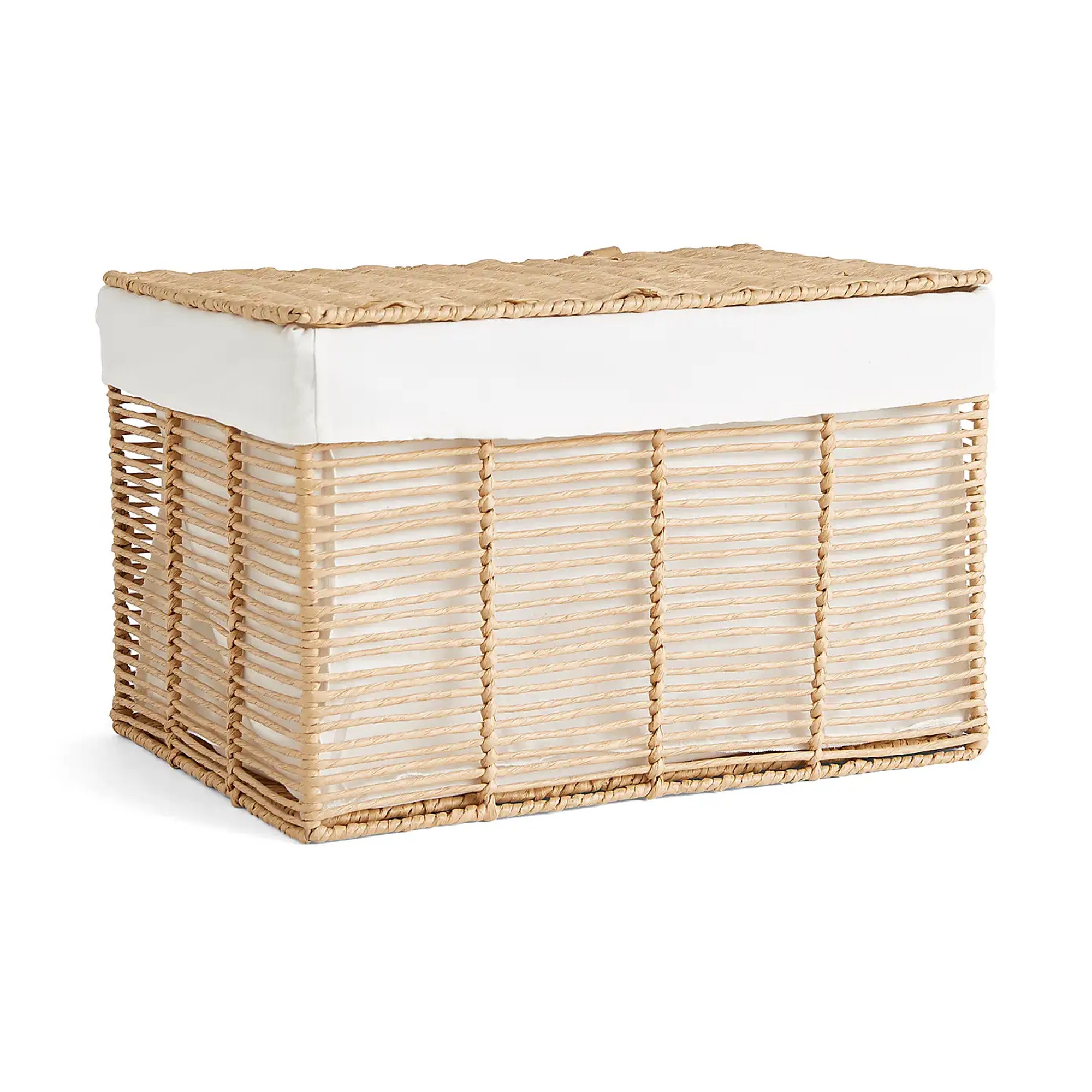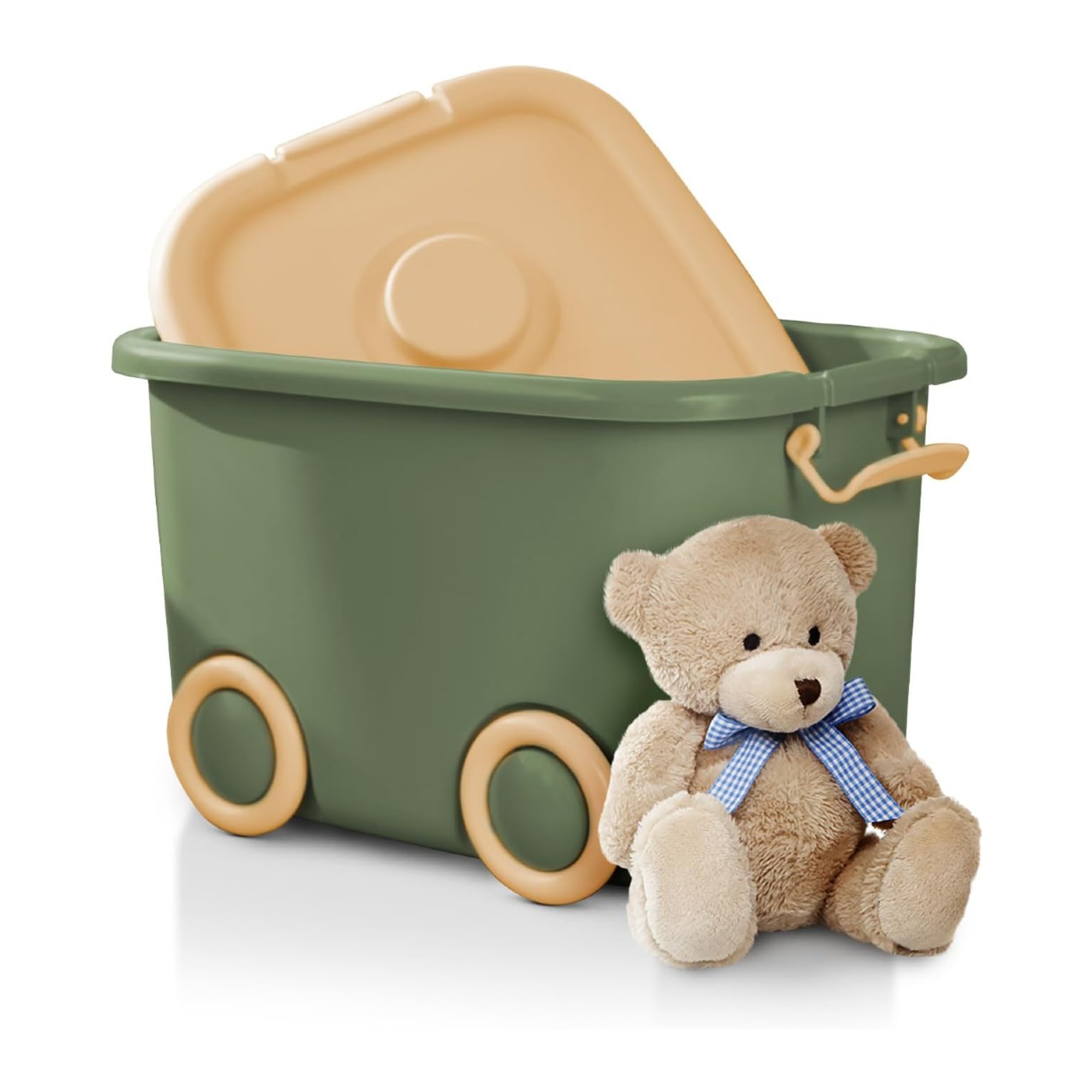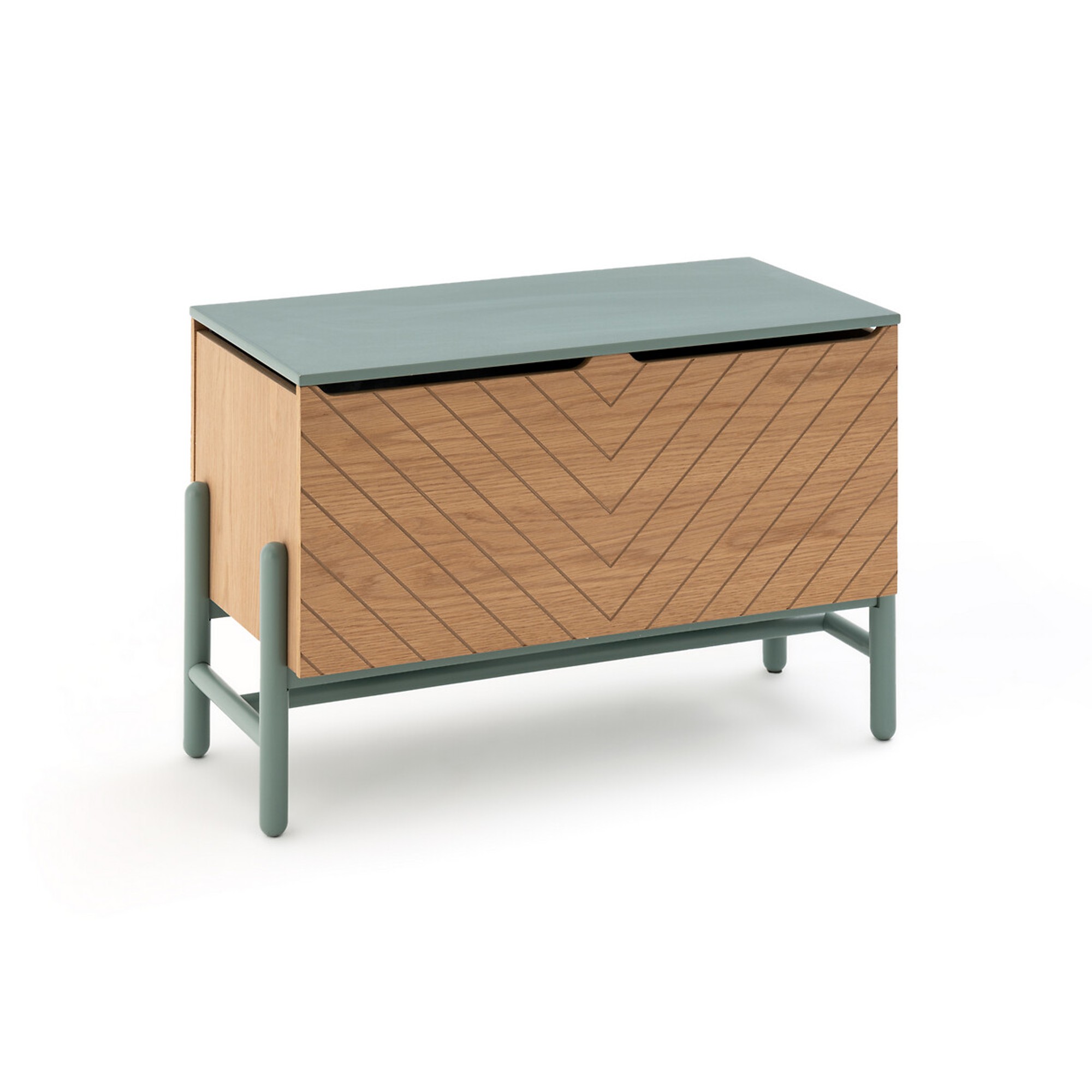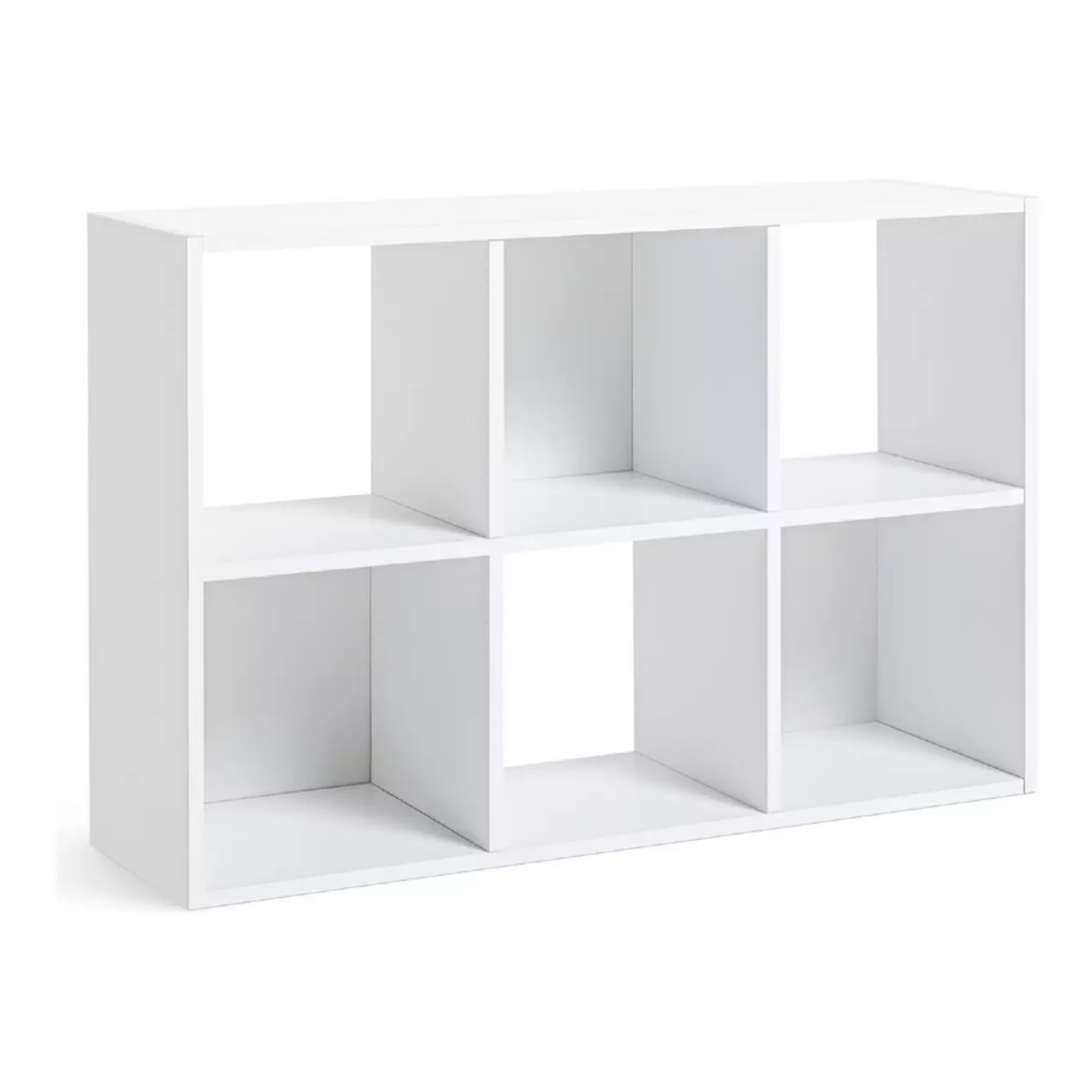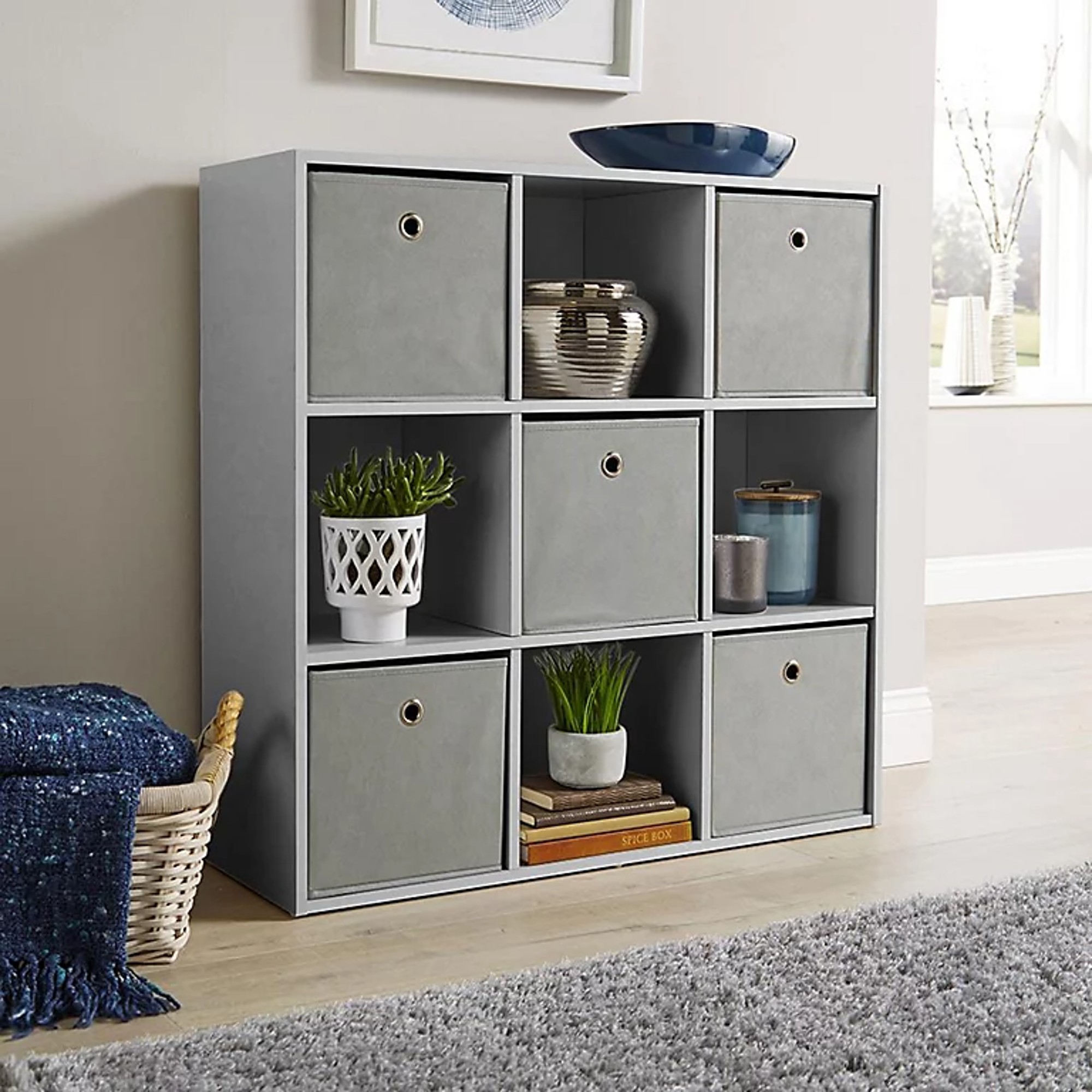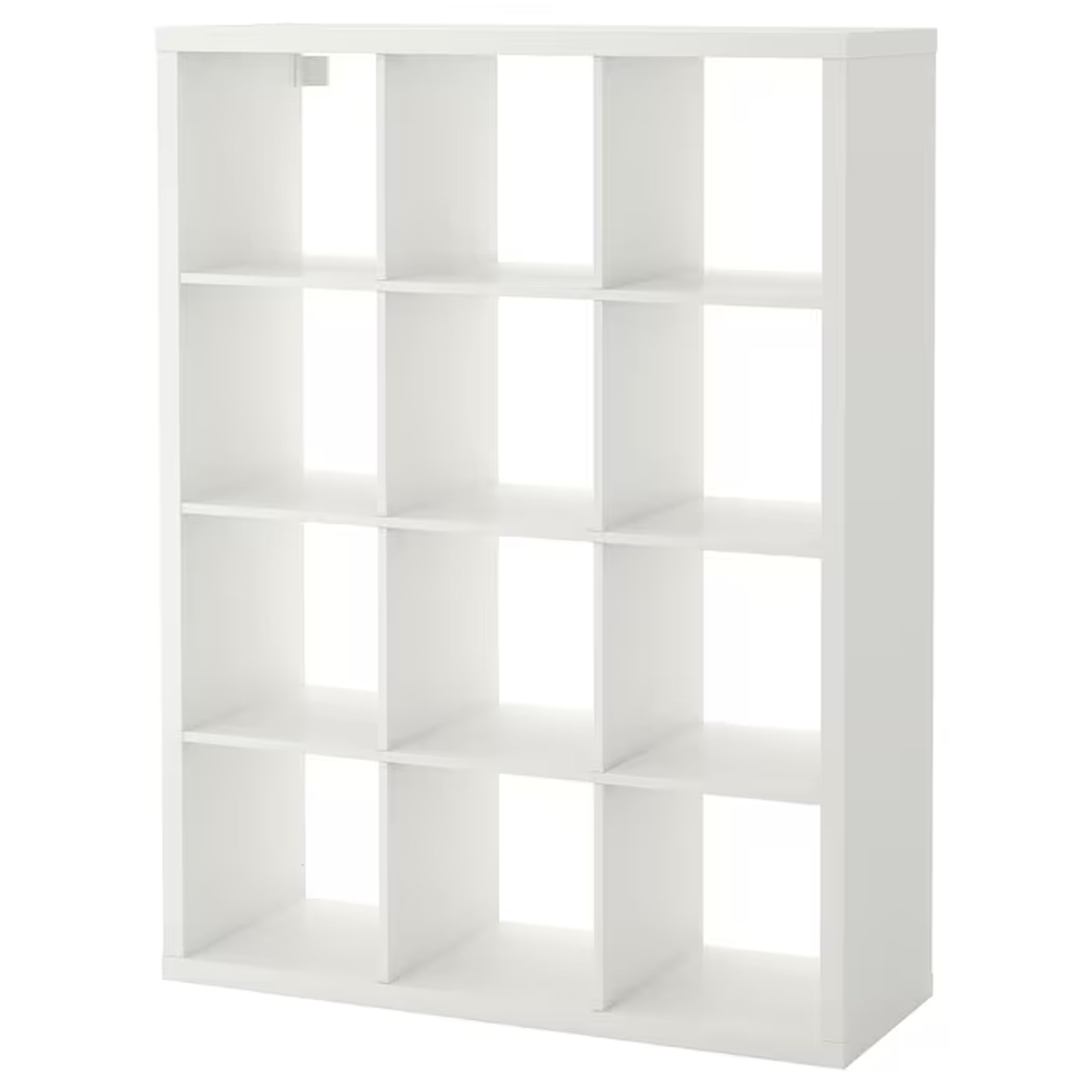34 toy storage ideas to prevent a cluttered living room and a messy play area
These are the best ways to create an organised and clutter-free family home
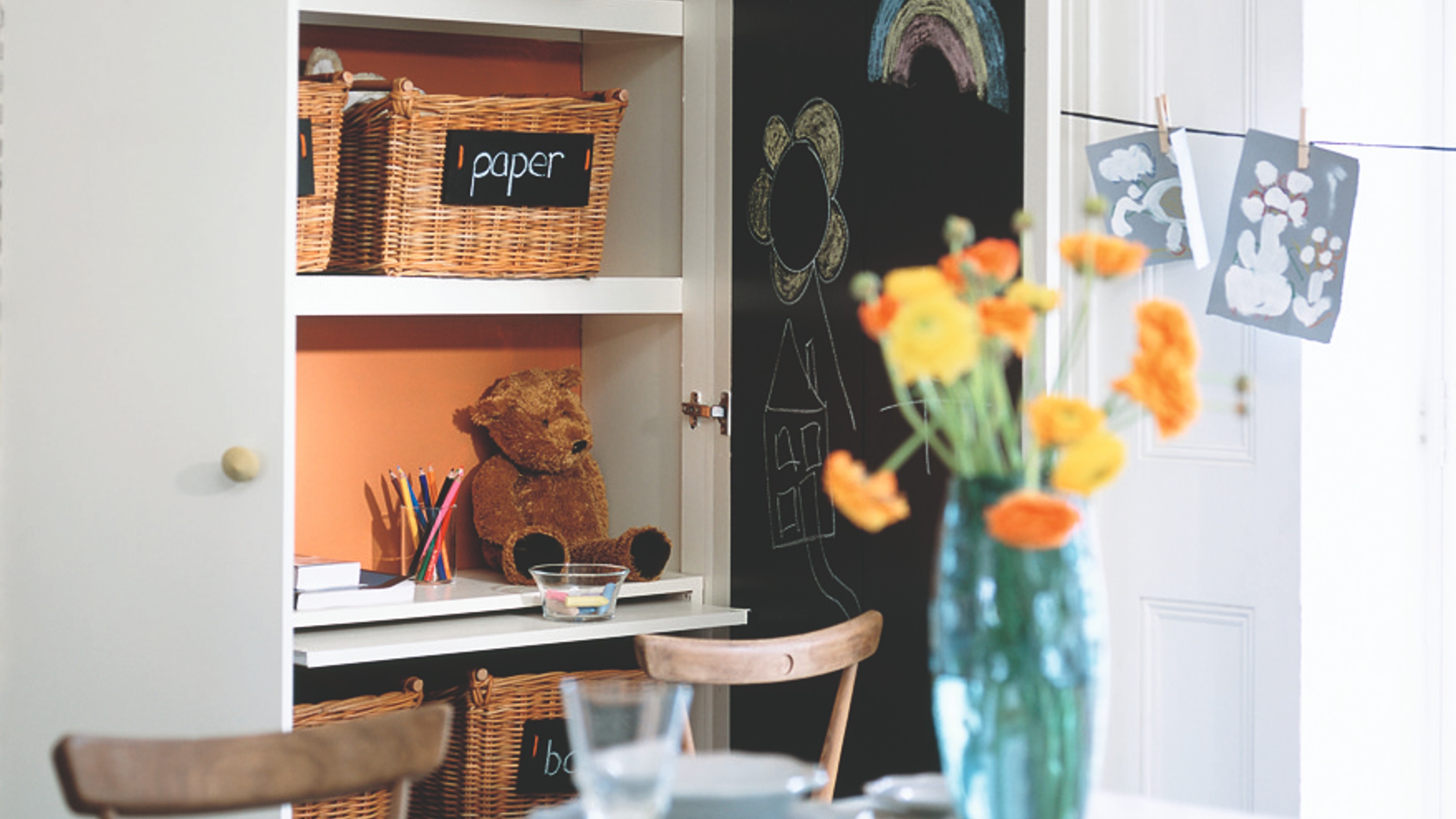
Once you have children - or even just a child - it’s easy to have your home cluttered and overrun with their toys in no time if you’re not careful. And this is just down to the sheer volume of toys most children have at their disposal. Which is where clever toy storage ideas come in.
Even though it’s important for your kids to feel that your home is their space as well, that doesn’t mean it needs to look messy and cluttered – and that goes for every room in the house, from the living room to your children’s room.
Just like you wouldn’t have all of your belongings randomly scattered around your home but instead have them organised and put away, the same should be done with your child’s toys to keep your home looking neat and tidy, as well as aesthetically pleasing. That’s always nice, isn’t it?
34 toy storage ideas to banish mess and clutter
‘It’s so important to store toys in ways so that they’re easy to reach, not damaged or crushed and, of course, aesthetically pleasing,’ says Shadiece Mitchell at Stokke.
We couldn’t agree more. So here are some of our favourite living room storage ideas, as well as bedroom storage ideas for your child’s room to contain their favourite play things.
1. Invest in storage boxes and baskets for open shelves
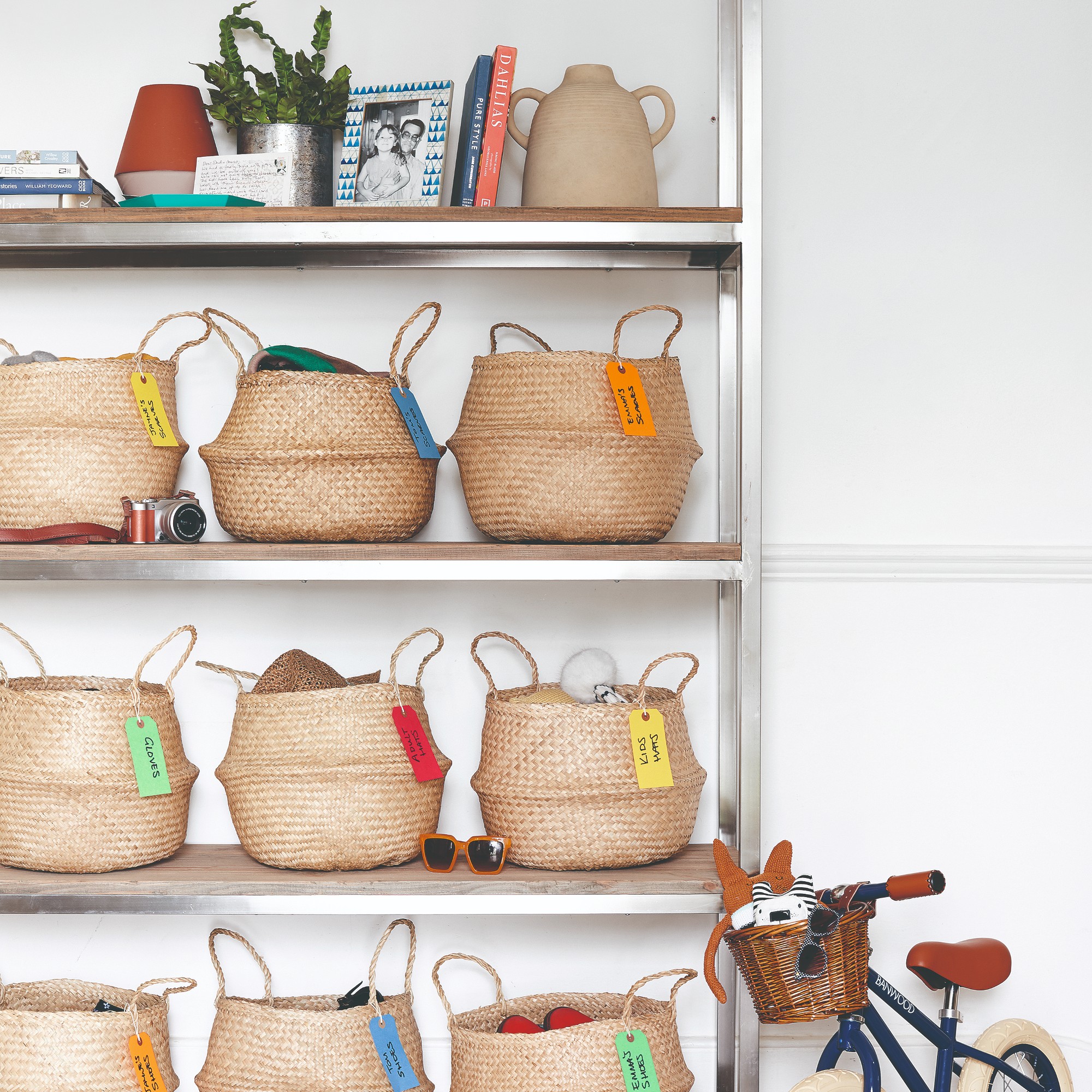
Utilising storage boxes and baskets is one of the oldest tricks in the organising book. But it’s also one of the most effective and easiest ways to organise and store your kids’ toys in an orderly and fairly aesthetic fashion that works even as a toy storage idea for a small living room.
‘Open shelves that you can fill with storage boxes with lids on is the perfect solution,’ Shadiece says.
Sign up to our newsletter for style inspiration, real homes, project and garden advice and shopping know-how
Siân Pelleschi, founder of Sorted! and APDO (Association of Professional Declutterers & Organisers) president, agrees, ‘I like to use baskets and boxes for storage – while not necessarily the most aesthetically pleasing, clear boxes are fantastic as you can see what’s in them without having to even open them up and they come in all shapes and sizes.’
Clear boxes don’t only make it easy for you to see what’s in them, but also for your child which is an added benefit.
Finally, Gabrielle Felman, Lovevery director of child development, adds, ‘It’s also helpful when bins and baskets are coordinated. It makes spaces look very neat and aesthetically pleasing. Displaying baskets and containers can be good for organising small related pieces and also fun for your toddler to practise putting items in and taking them out.’
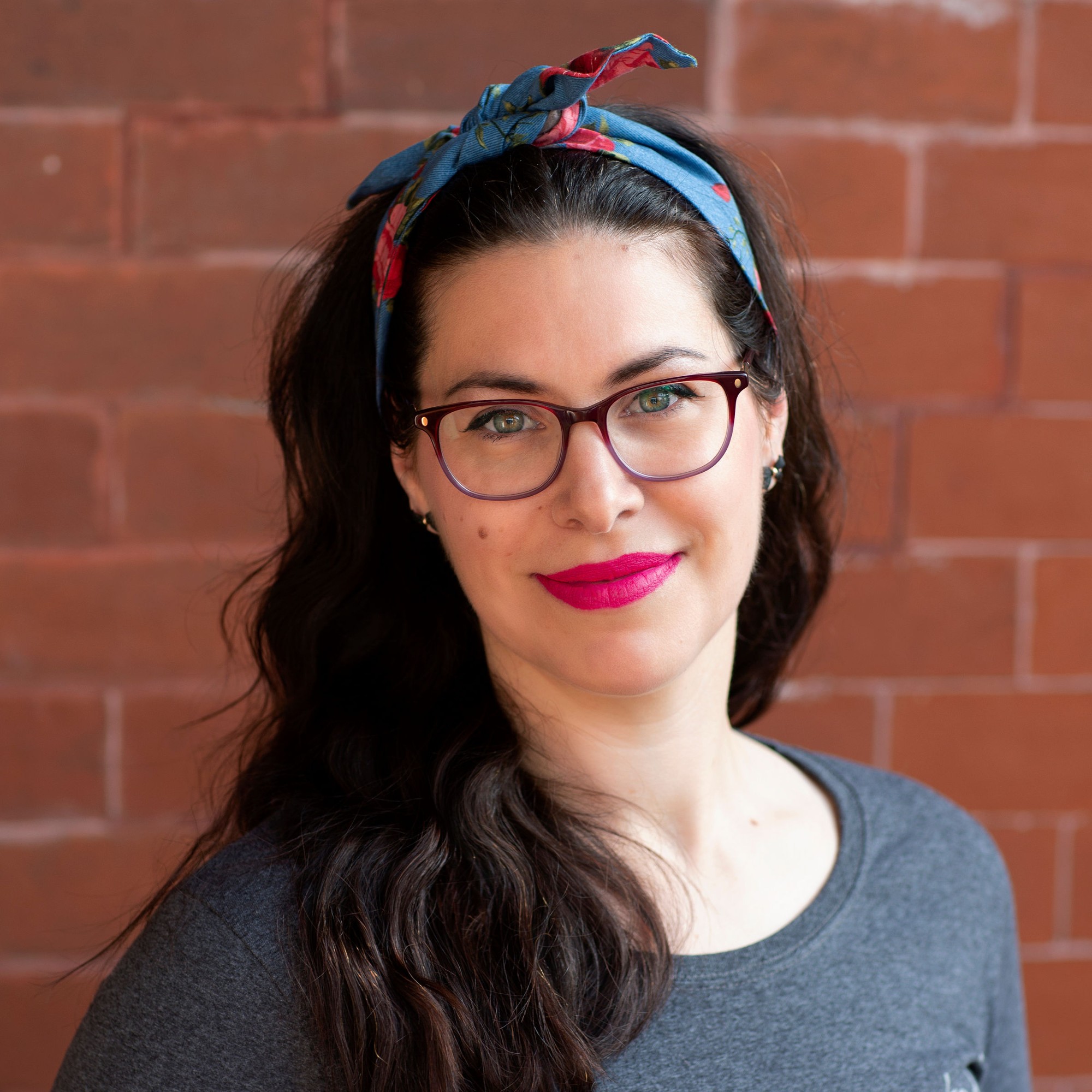
Siân Pelleschi is the owner of Sorted!, a Cheshire-based home and office decluttering and organising service, and the current President of APDO - the Association of Professional Declutterers and Organisers. With Sorted!, she aims to take away the stress and hassle that everyday life can sometimes bring, both in your home and working environment.
2. Do regular toy swaps
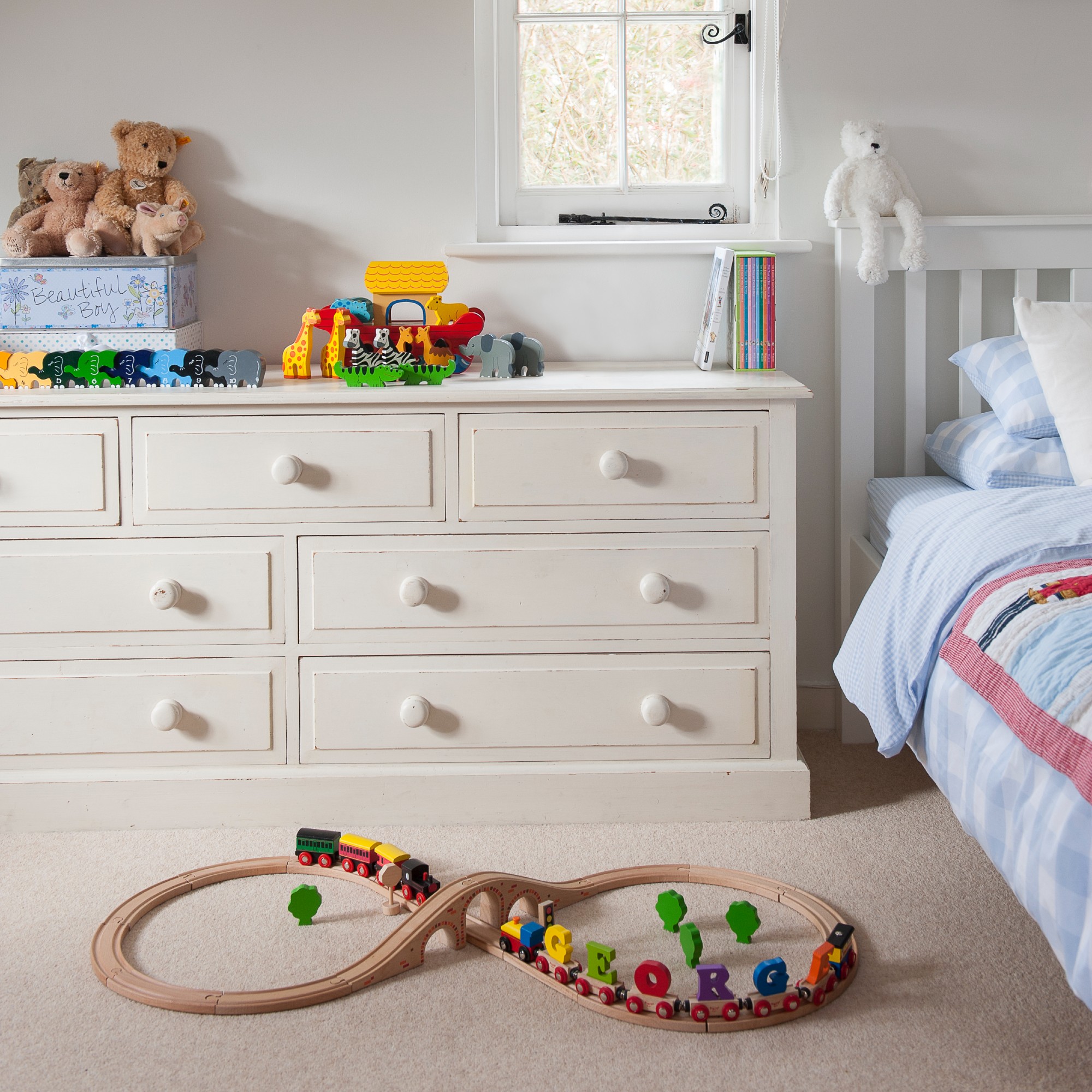
‘Children have far too many toys these days and research claims they only play with about 12,’ reveals Marie Bateson, APDO's volunteers director and owner of Cut the Clutter.
And given this finding, there’s no need for you to have a huge amount of toys available for your child at all times. Instead, you can introduce the helpful system of toy rotation.
‘The concept of toy rotation encourages independence by empowering children to care for themselves and their space. Seeing that each item has a place can help encourage children to clean up after themselves in a way that welcomes order. Rotating toys keeps them fresh and interesting,’ Gabrielle explains.
Mel Carruthers, founder of More Organised and APDO member, continues explaining what exactly toy rotation means, ‘Toy rotation means that a selection of toys are made available at any one time, with the rest stored away. Then every couple of weeks, you can “rotate” which toys are out and available. Select toys that develop different skills, such as a building toy, a creative toy, a couple of games, role play toys. Etc. in each “batch” to ensure variety.’
3. Add a living room toy box

If you have a child, it’s likely that your living room is regularly utilised as a play area. Especially if you don’t have a dedicated playroom. So if that’s the case, invest in a sizeable toy storage box where you can put all the toys when they’re not being played with.
‘If you don’t have a playroom then it’s useful to have a large toy box in the living room to store their favourite toys that they get out and play with a lot as a family,’ Shadiece at Stokke says.
And as Siân says, while this might not be the most revolutionary storage idea, it’s easy enough that your child can participate in toy clean up and it’s better than nothing at the end of the day. ‘Don’t get hung up on perfectionism. Just getting toys into a single box and off the floor is better than nothing.
4. Utilise what you already have
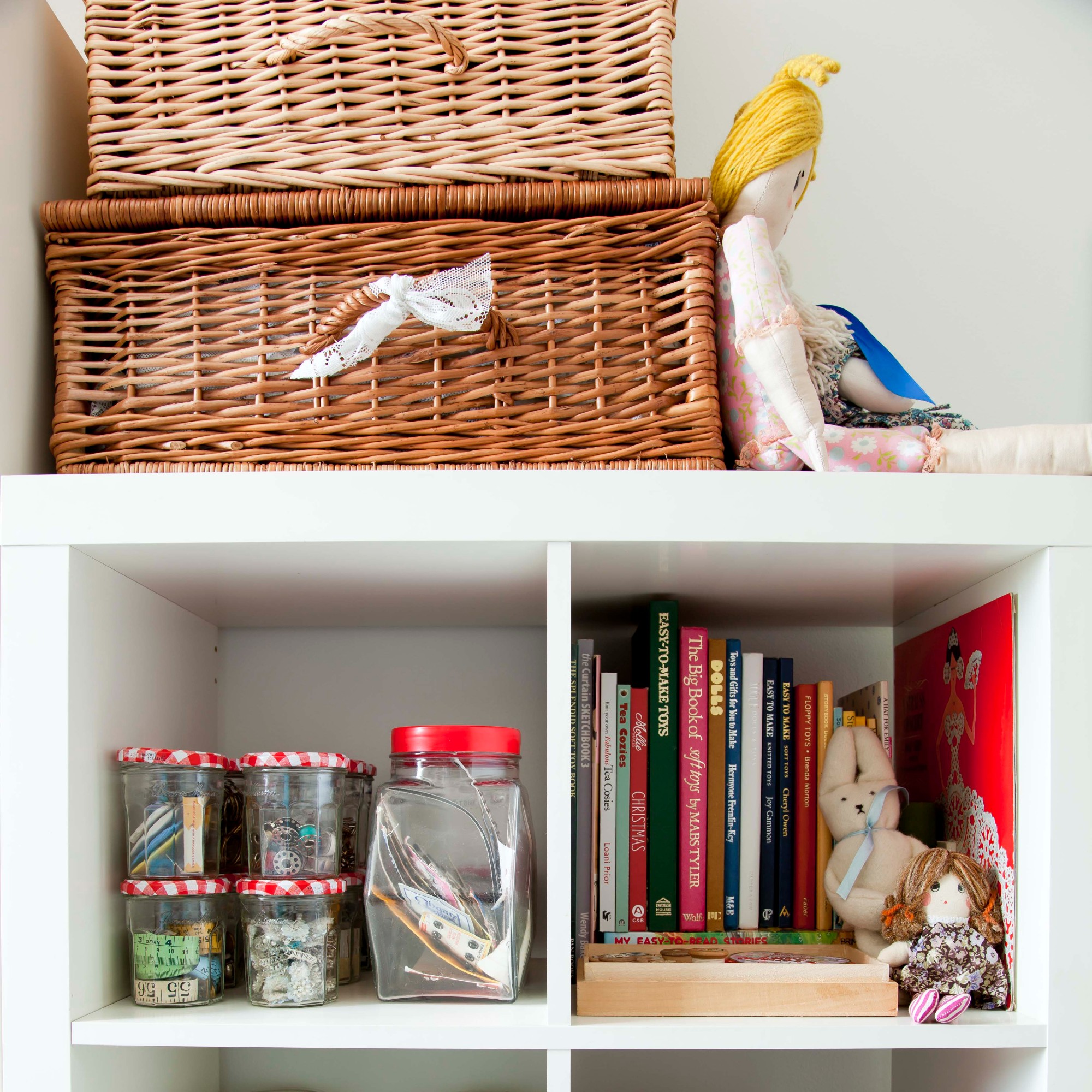
Just like you can turn household items into upcycled planter ideas for the garden, you can turn other no longer used things into toy storage.
‘I love to utilise what’s already in the home for storage – decorative plant pots can become pen pots, boxes on wheels can become a moving library of books or games that can be pushed and rolled around the house to wherever they’re needed,’ Siân suggests.
Marie of Cut the Clutter adds another idea of reusing something that’s meant for another purpose for innovative toy storage, ‘A favourite of mine is the IKEA rail with hanging pots which are great for pens, pencils, stickers, glue sticks etc and the hooks can be used for scissors.’
5. Keep only what you can
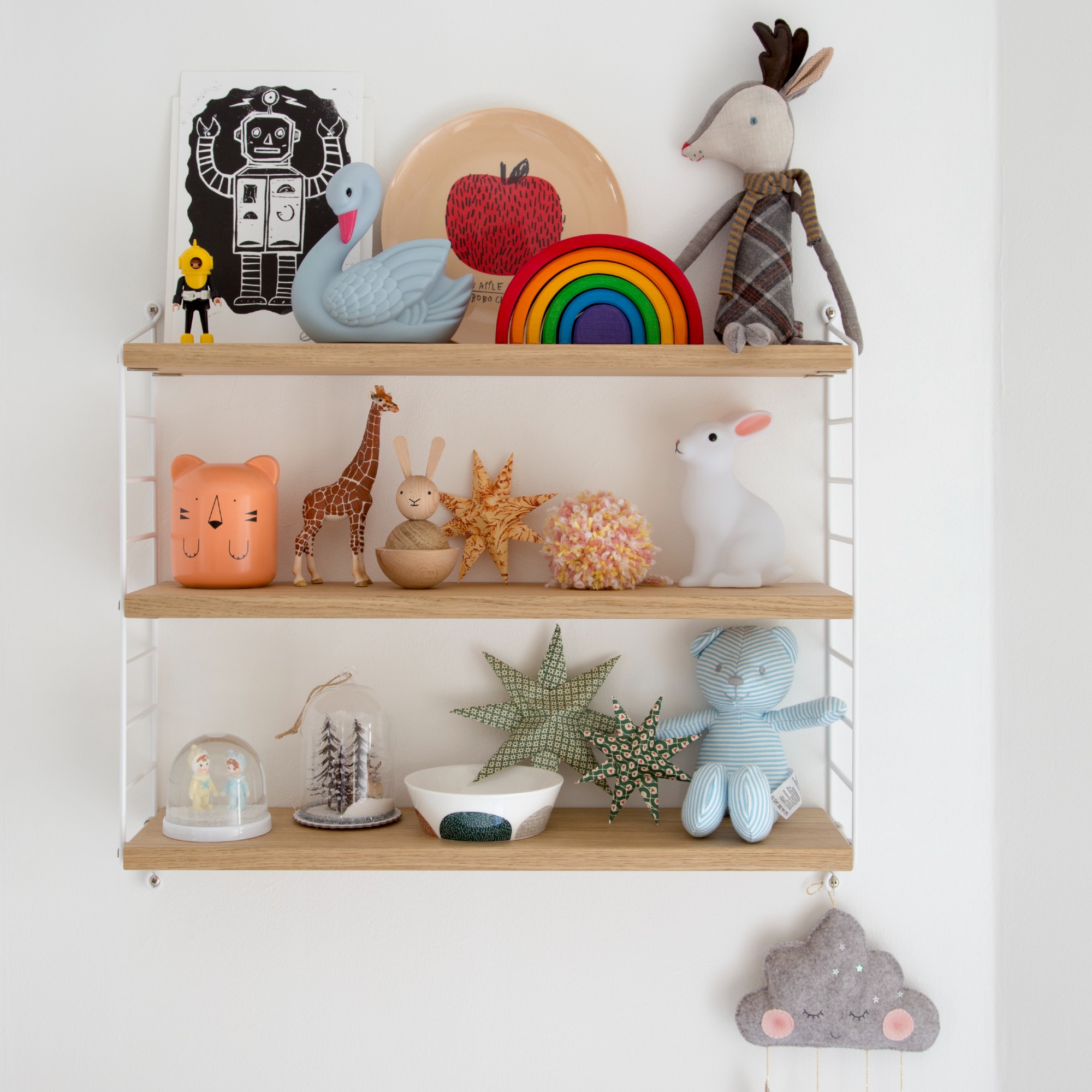
When it comes to toy storage, it’s also important to remember to not overwhelm yourself and only keep the amount of toys that you realistically have space for. Which is why it’s important to regularly declutter the kids’ bedroom and get rid of toys they no longer play with.
‘If you are struggling with a large amount of toys, perhaps it’s time to declutter. Involve your children to find out what they like, and what they want to pass on to other children to play with,’ says Mel of More Organised. ‘It’s a valuable skill to learn from an early age, and will help them throughout their lives.’
6. Opt for cube storage units
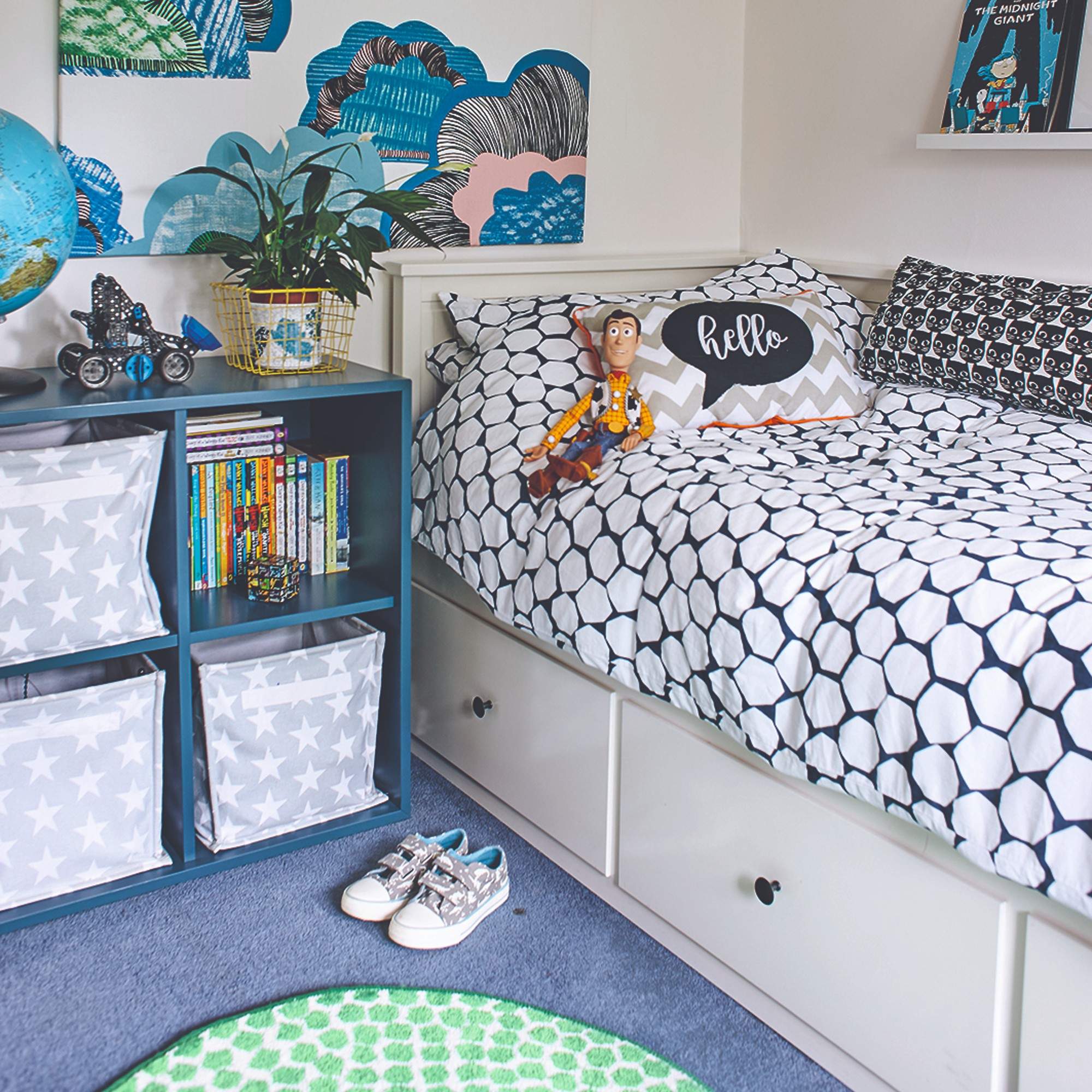
Investing in a cube storage unit, such as the IKEA KALLAX shelving unit, is a very popular storage solution across the board because it’s so versatile. And toy storage is no exception, especially since the piece of furniture can grow with your child.
‘Cube units are really great as you can use the fabric bins or in the bottom slots, the plastic containers on wheels. If they are two cubes high it makes a great surface for things like farms, garages, dolls houses or an art station,’ Marie at Cut the Clutter says.
Victoria Fearnley, founder of Surrey Decluttering and APDO member, agrees, ‘You can’t go wrong with IKEA’s KALLAX units! They come in many shapes and sizes and the insert baskets have lots of variety too, so you can mix and match to your heart’s content.’
Of course, IKEA’s KALLAX is perhaps the most popular in this department. But there are several other brands that make similar designs if you don’t have access to an IKEA or prefer to shop elsewhere.
7. Go high
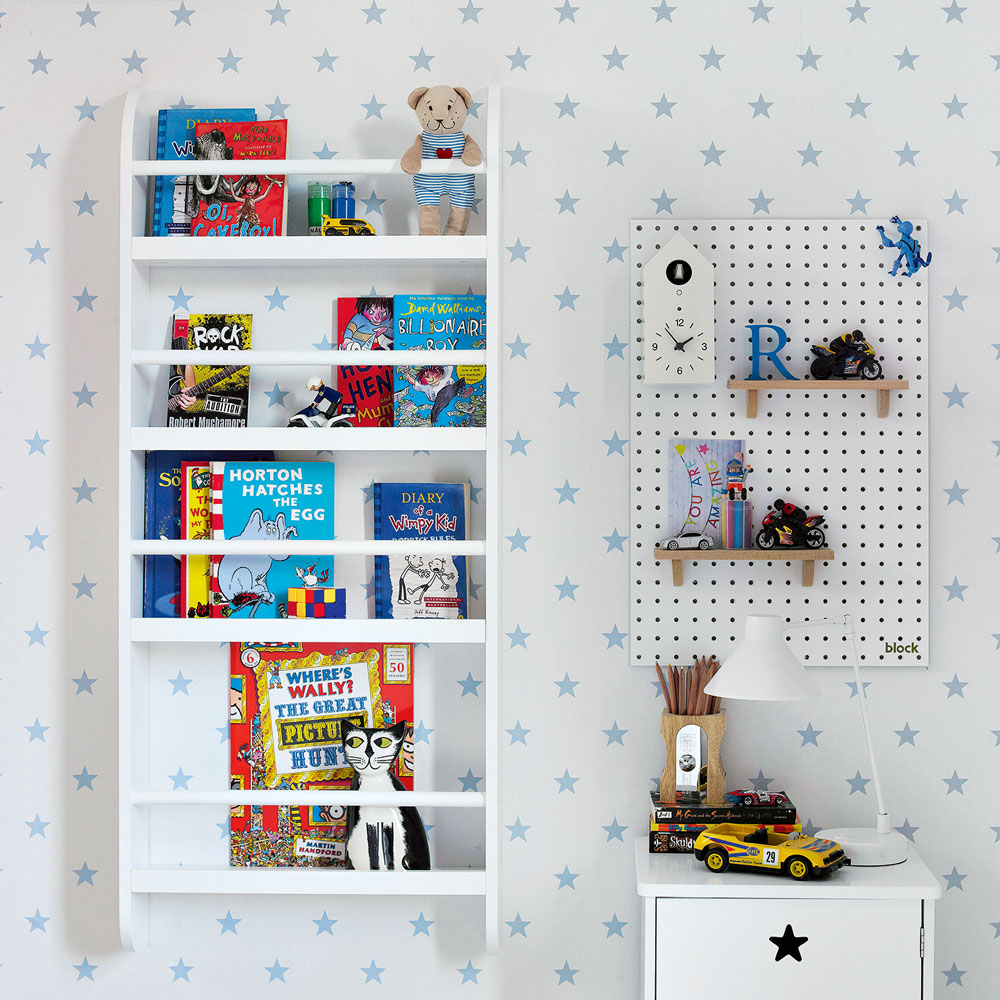
'Choose bedroom storage ideas that's out of the way (up high) then swap them over,' suggests childcare expert Kathryn Lord from More To Organising. 'Too many toys out can be very overwhelming and by rotating, it means they play more purposefully. It also makes it easier to tidy up as you have fewer different parts. You do not need the zoo and the farm out at the same time.'
Kathryn argues that big boxes and baskets are counterproductive, and says you're better off looking for playroom storage ideas like smaller boxes so the children can move themselves, making them more independent.
8. Hide toys in plain sight
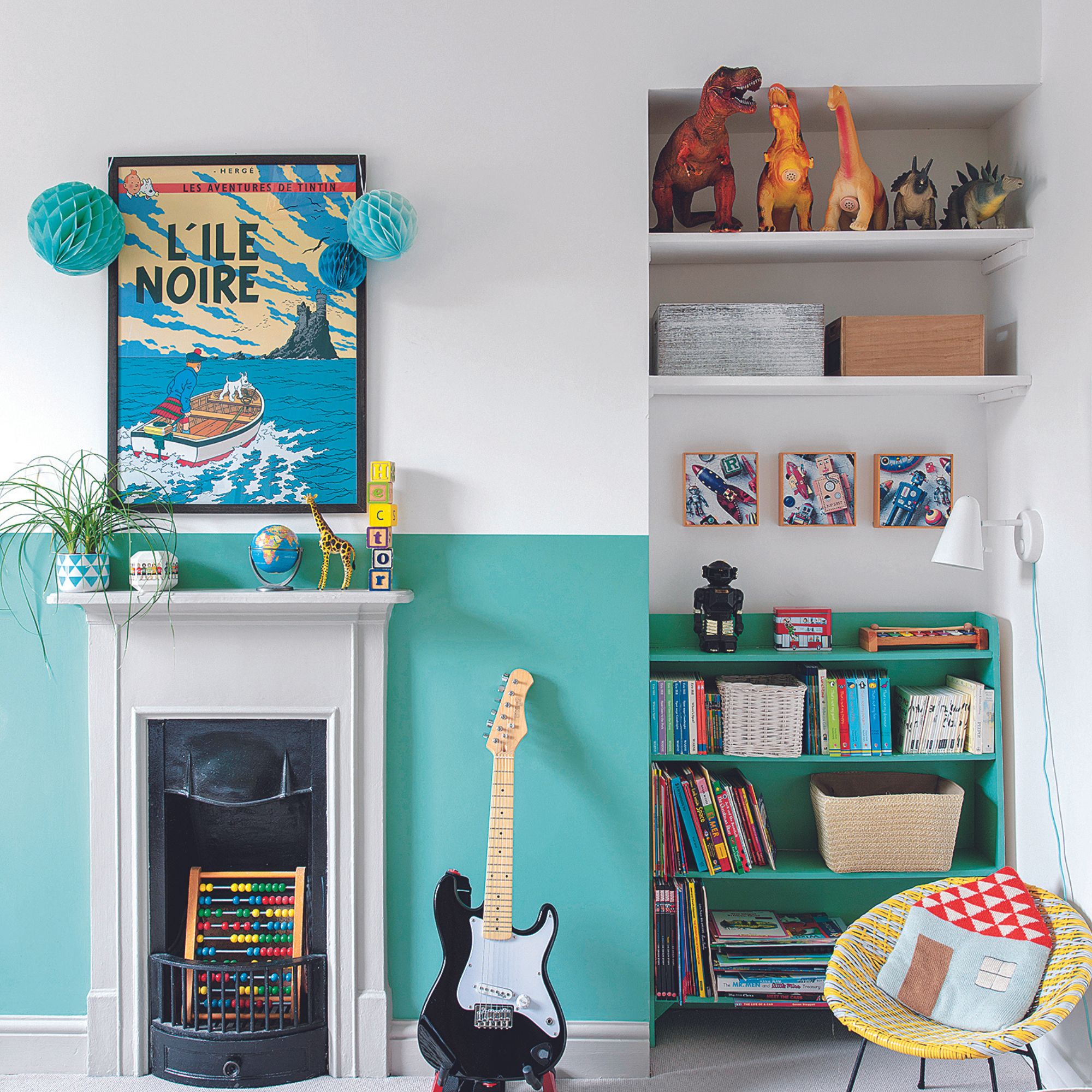
For Rachal Hutcheson, national retail manager at Sharps, fitted toy storage ideas are the most efficient option, especially in small spaces. 'Combine open living room shelving ideas with functional cupboards so that all toys and games can remain easily accessible but are stored out of sight when not being played with,' she says.
With a made-to-measure unit like this one, you can style your shelves with your favourite home decor pieces and stash the Minions and L.O.L Surprise dolls behind cupboard doors, so when guests come over they'd never know what was behind the doors.
9. Opt for over-the-door solutions

Store craft supplies on the back of a door to keep paint and brushes organised while taking up minimal surface space. This metal, over-the-door number makes brilliant use of what would otherwise be dead space. It also means your kids can easily grab coloured pens and glue when they want. Label the craft area with their name and encourage them to put their things back on their own.
Hopefully, it'll mean you don't mind leaving the door open, meaning the contents will be concealed behind the door. An over-the-door rack works for playroom storage ideas for little ones that love arts and crafts. 'Children’s toys won’t stay tidied away for long,' says Simon Glanville, managing director at from A Place for Everything. 'So choose a storage solution that’s easy for you, but also easy for your little one.'
10. Hang storage nets
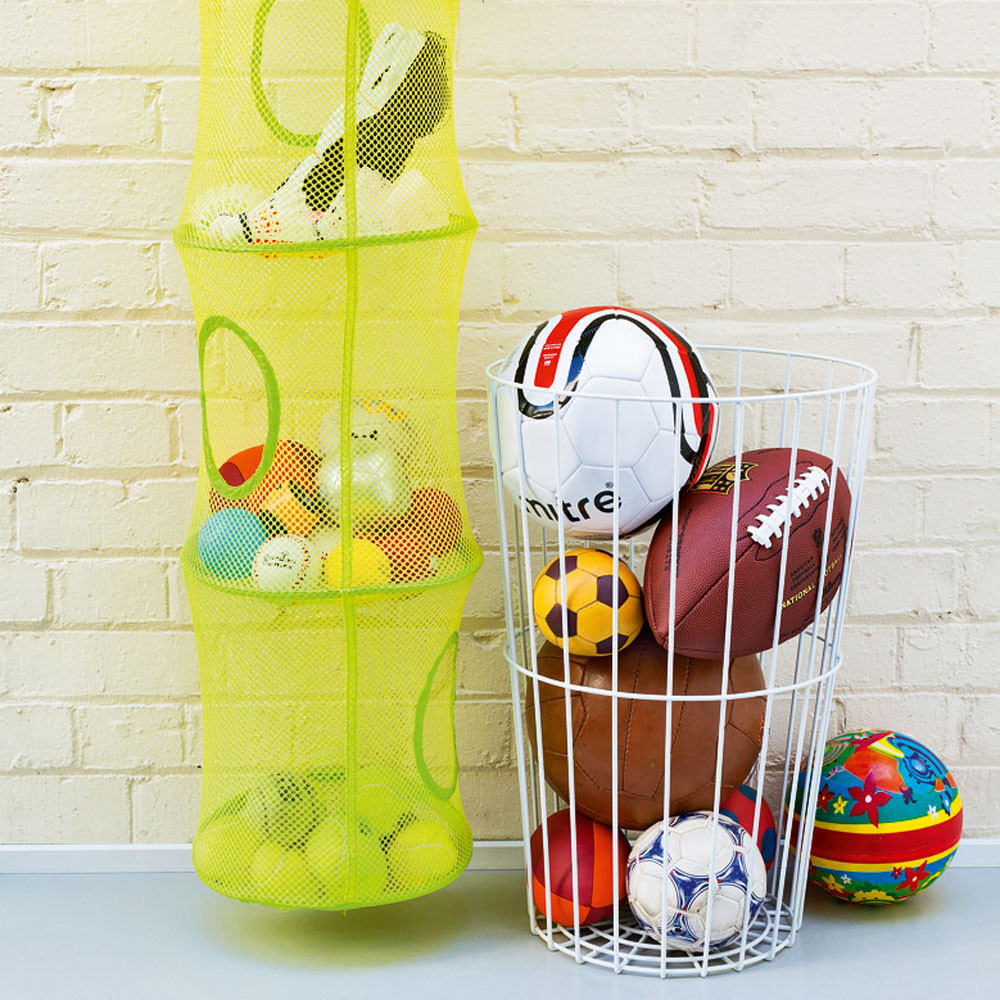
Storage nets, available at Amazon are a flexible, space-saving option for shoving away toys, as they fold down neatly when not in use.
You'll need to buy a hook to hang these toy storage ideas from the ceiling, and while they won't be able to hold heavy items, they're sturdy enough to house plenty of cuddly toys and sports balls.
11. Take stock of what you've got

'Look at the type of storage you have and compare it to the items in the room,' Siân advises.
'The IKEA KALLAX is all the rage in playrooms and while it’s good for some items, it can be limiting on what it can house for those slightly longer or more unusual-shaped ones. Assess whether you need open and wider shelving or whether some of the items need to be hidden away.'
12. Keep things labelled up and in order

Have a place for everything and everything in its place with lots of labels attached to storage baskets, boxes or the popular HAY storage crates. If everywhere has its own designated home there are really no excuses for not putting them back properly.
'Consider clear boxes and labels,' Siân comments. 'If children can see what’s in a box they’re more likely to play with it (although can sometimes make the space look busy) and labels are great if children are learning where an item belongs.'
These baskets containing sports kits are a great boys' bedroom idea that helps keep the floor space free.
13. Hide toys away in adorable designs
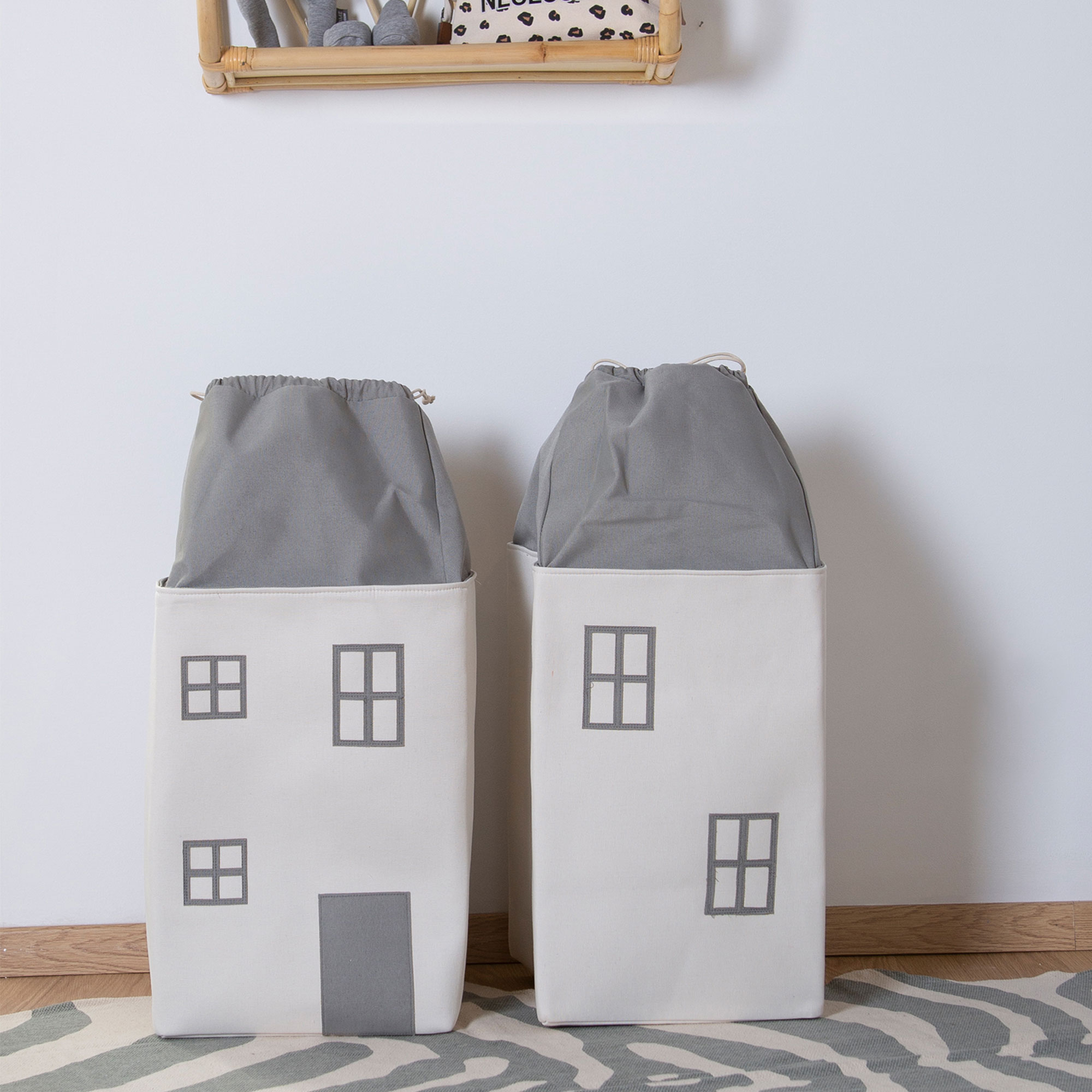
Conceal toys in cute playroom storage ideas like these toy house storage bags from Next. These drawer-string bags designed to look like little houses will look right at home even in the corner of the most stylish of living rooms. Having these to hand will make it easy to give your space a quick tidy during nap time.
14. Style a sideboard
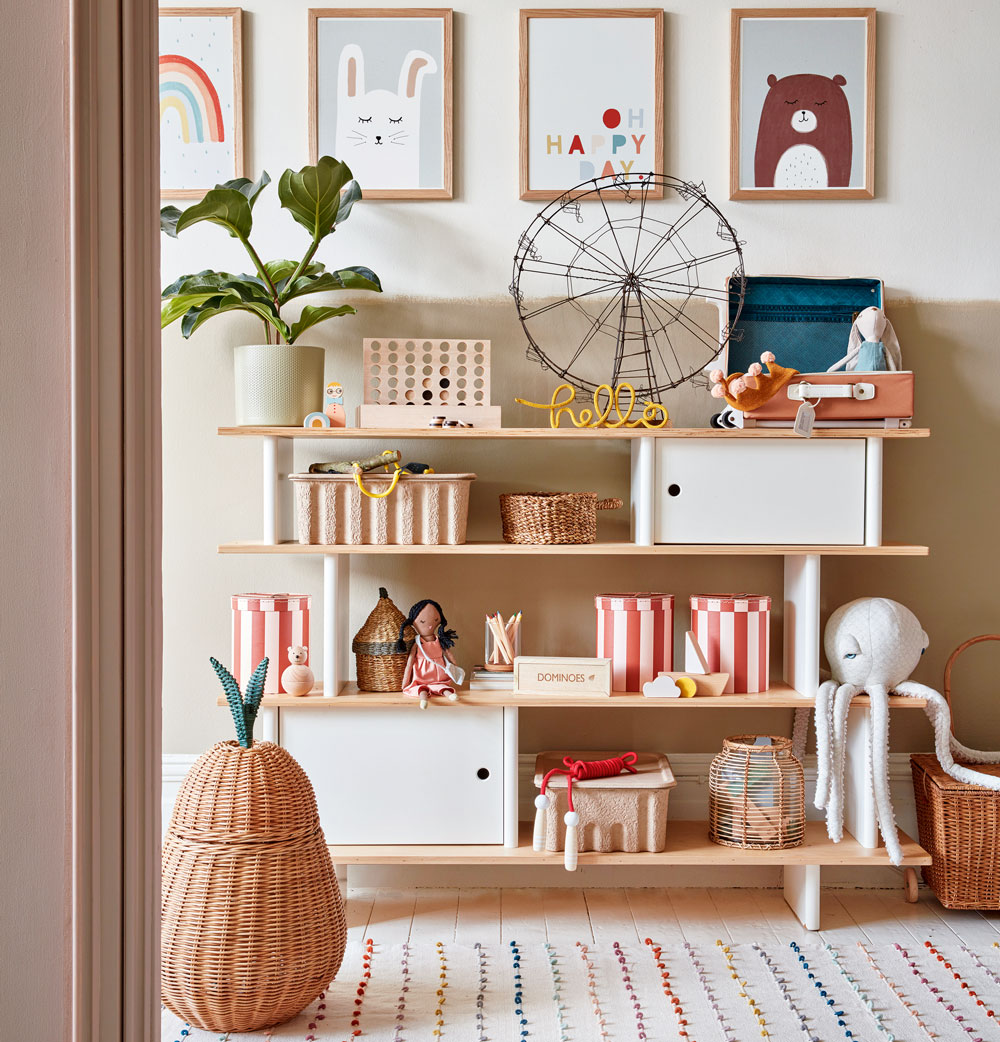
A sideboard like this provides the perfect modular storage solution to hide items away and display the most attractive toys – because there are so many beautiful toy designs that deserve to be shown off.
A well-styled sideboard can help to declutter any space within the home, from hallways to living rooms and bedrooms. Intersperse the toys with more grown-up items, such as house plants and framed family photos to prevent the look from feeling too much like a playroom accessory.
15. Add personality with paint
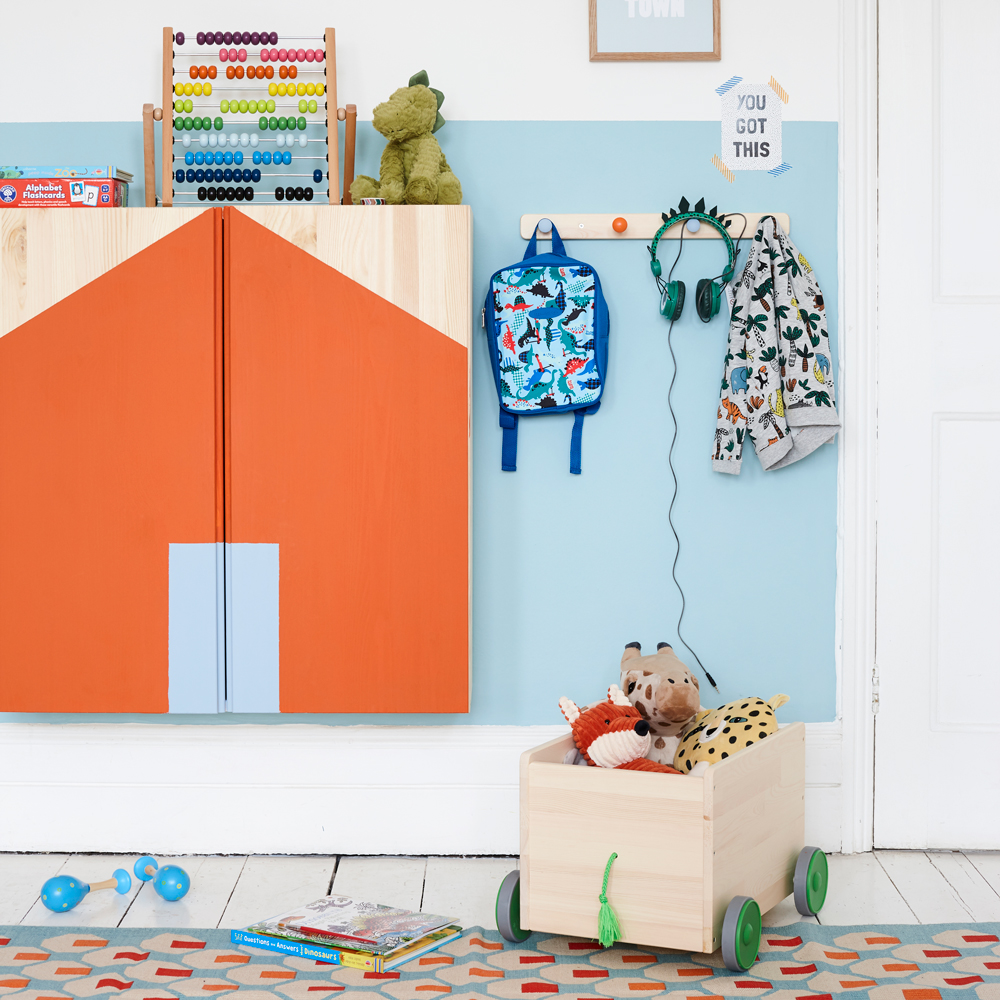
Just because storage is functional doesn't mean it has to be boring – especially in a child's room. We've updated this pine IKEA storage unit with a few tester pots of paint – a simple yet brilliant IKEA hack to try.
For this bedroom paint idea, simply use masking tape to section off the areas you wish to paint and let your creativity run wild. Giving toy storage ideas a fun makeover might even encourage a little one to want to tidy up themselves.
16. Utilise an alcove space

A smart alcove idea ensures space is used to its maximum potential. Use any awkward spaces and corners to stagger playroom storage ideas, leaving larger pieces such as play kitchens freestanding in the lower half, then put up shelves stacked above to keep items out of reach.
17. Create a curated display on floating shelves
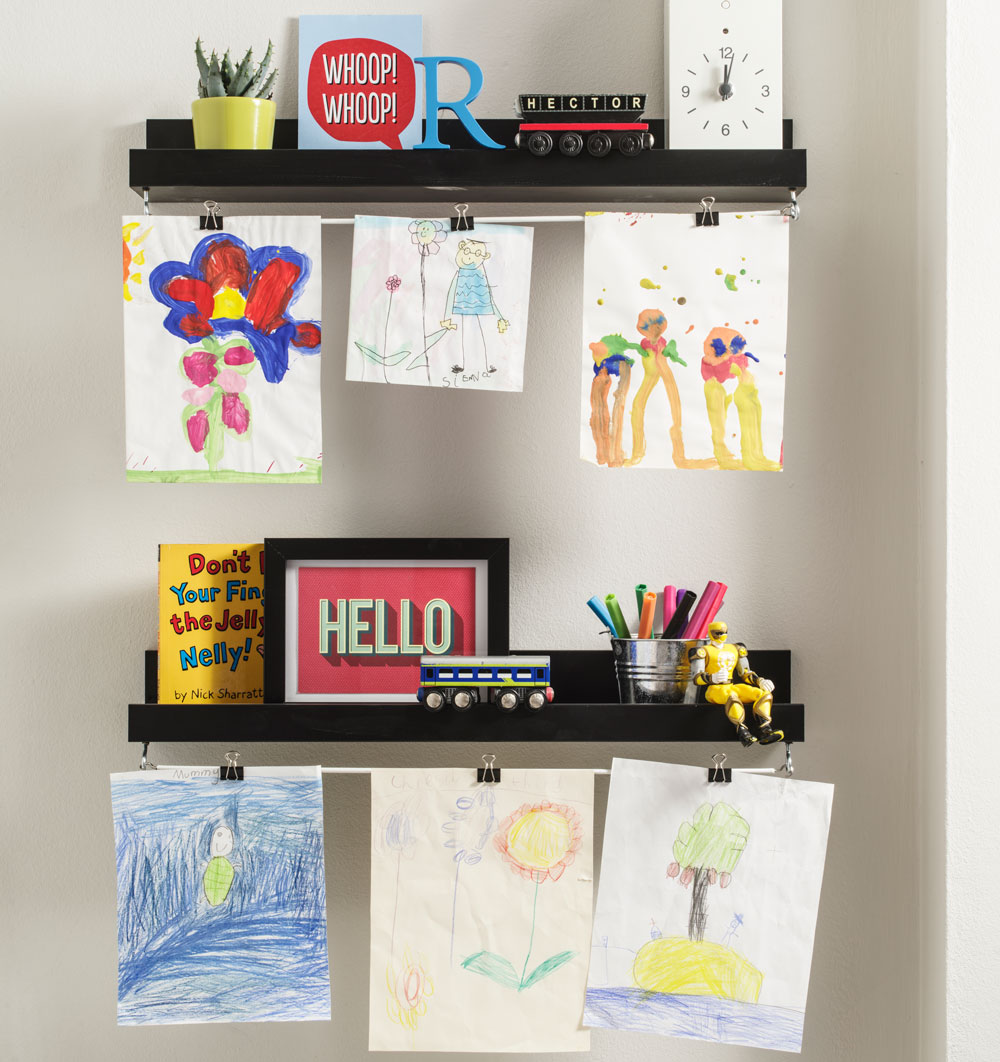
Create a striking wall feature that’s also a handy place to keep books, toys and kid's artwork with floating shelves. Stack several floating picture ledges and attach a wire trim to hang artwork to create a characterful display.
Children can easily store and display their favourite toys and books on the shelves, turning them into an ever-changing curation.
18. Keep LEGO in order
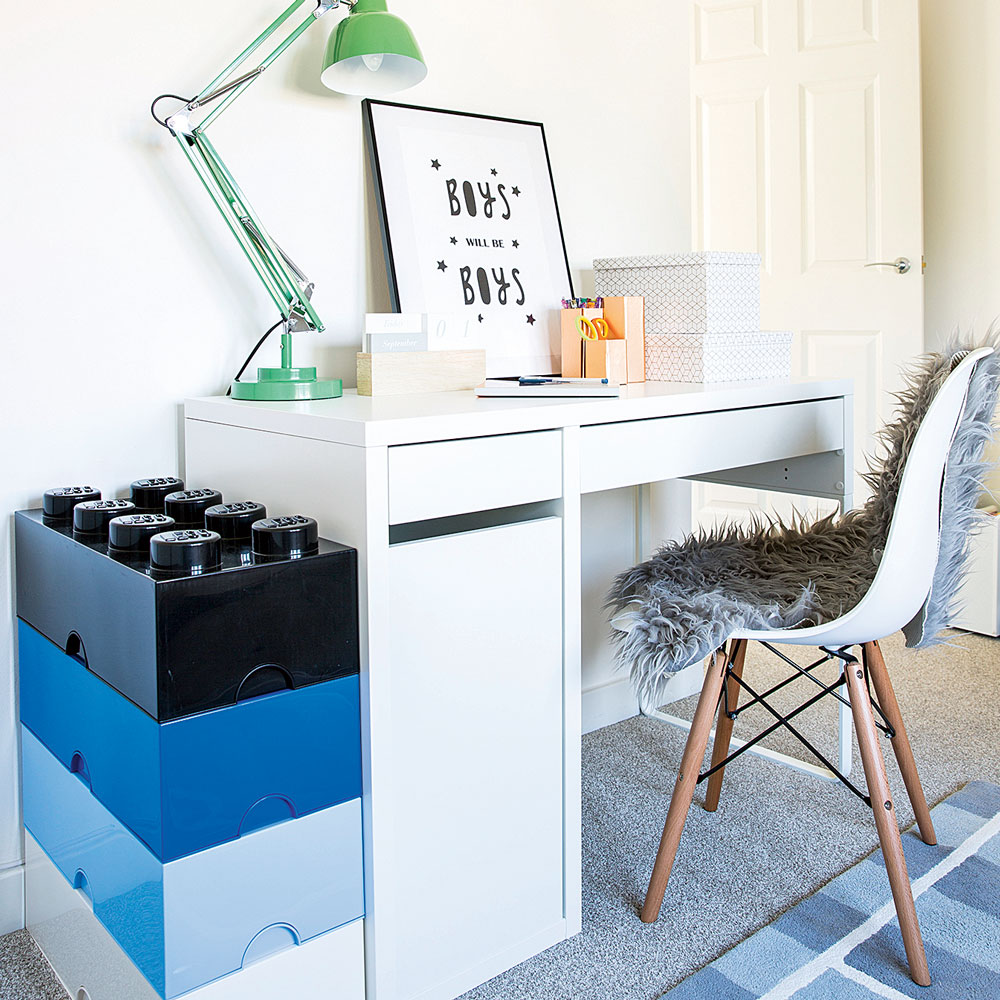
There's nothing more frustrating than losing a vital building block to complete a LEGO masterpiece. It is therefore essential to seek sensible storage for your children's LEGO collection. LEGO appeals to all ages, from six to sixteen so the storage has to be timeless and suitable for all tastes – so these characterful LEGO design collection storage boxes perfect.
The stackable toy storage ideas are ideal for keeping order in style for boys and girls bedroom ideas. Of course, they are not just for building blocks, and can be used to store all manner of accessories.
'Our easy access Stacking Open Toy Storage Trunk makes it easy for you to fill quickly, but is also at your little one's level so they have easy access when it’s playtime' explains Simon from A Place for Everything. 'Plus, as each toy storage cube cleverly interlocks, you can safely stack them to make the most of vertical space and use those awkward spaces in communal areas.'
19. Elevate storage in living rooms
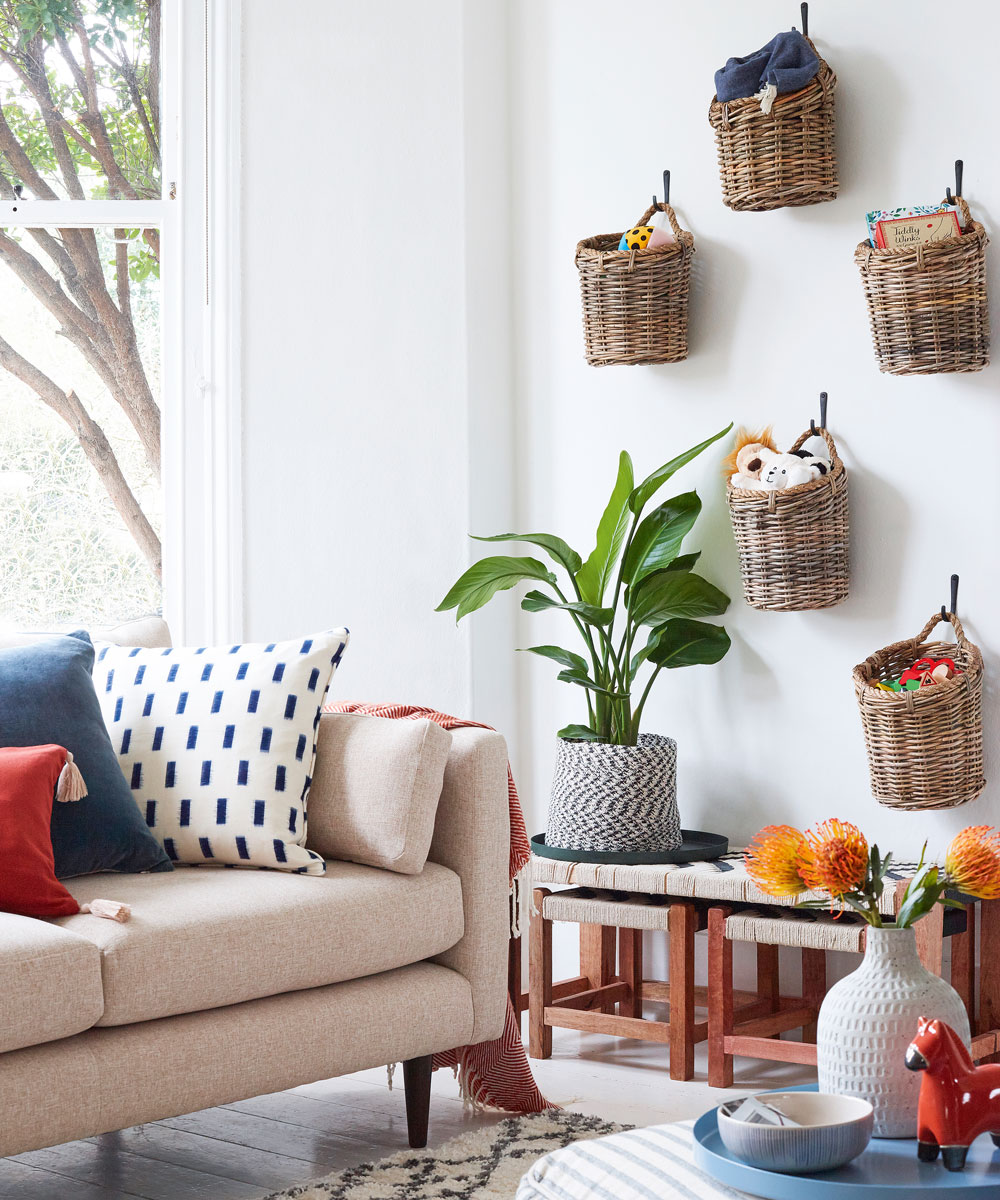
Keep toys off the floor and out of sight in a living room, to ensure the space feels like a grown-up affair after bedtime. Out of sight, out of mind is very much the idea behind elevating playroom storage ideas.
Multiple hooks on the wall provide plentiful space to hang stylish baskets to store toys – which can easily be taken down when playtime begins. It's a great bargain living room storage idea too if you can find good-value baskets.
20. Dedicate a corner for bespoke storage
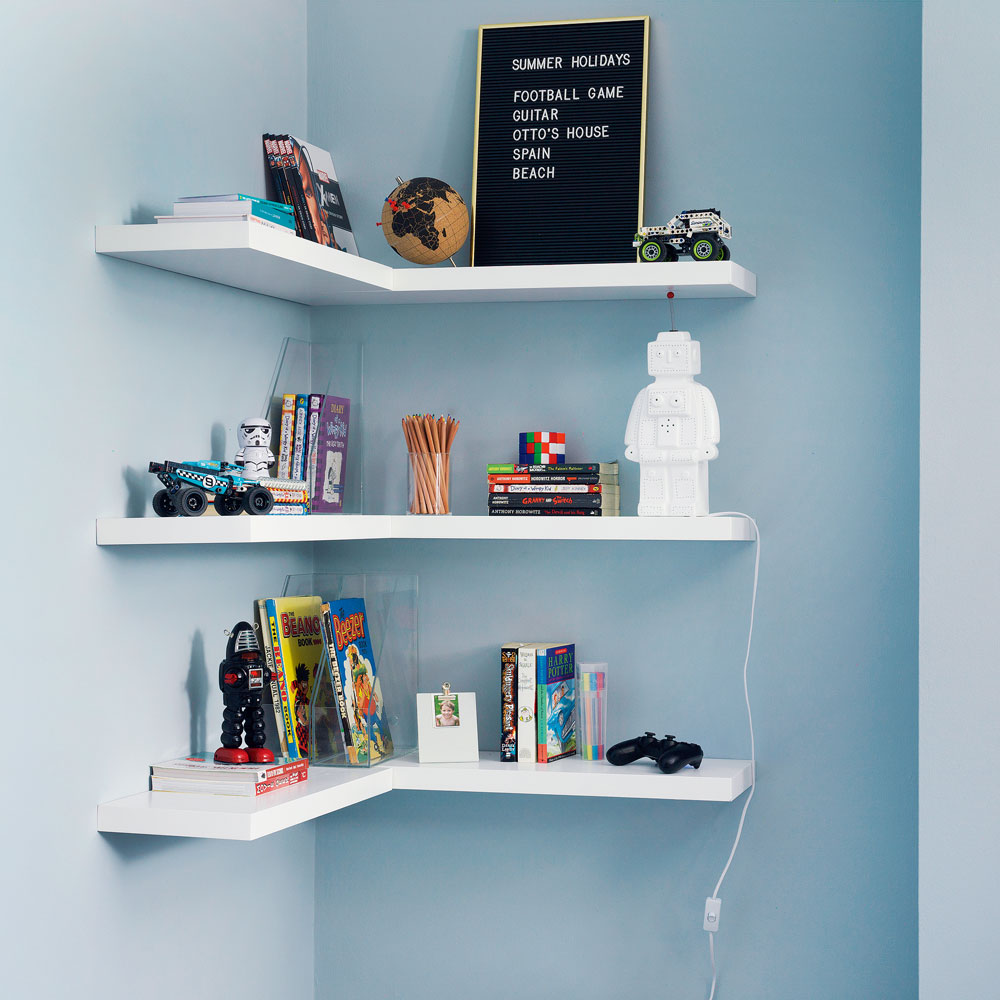
Make the most of a corner by putting up shelves on both sides. By hanging the shelves at a higher level you can use this idea for storing books and toys that may need to be looked after, rather than left on the floor or squished into a basket. Elevating toys into a corner is a great space-saving small kids' room idea that will free up some of the rest of the room for play.
21. Make storage multifunctional
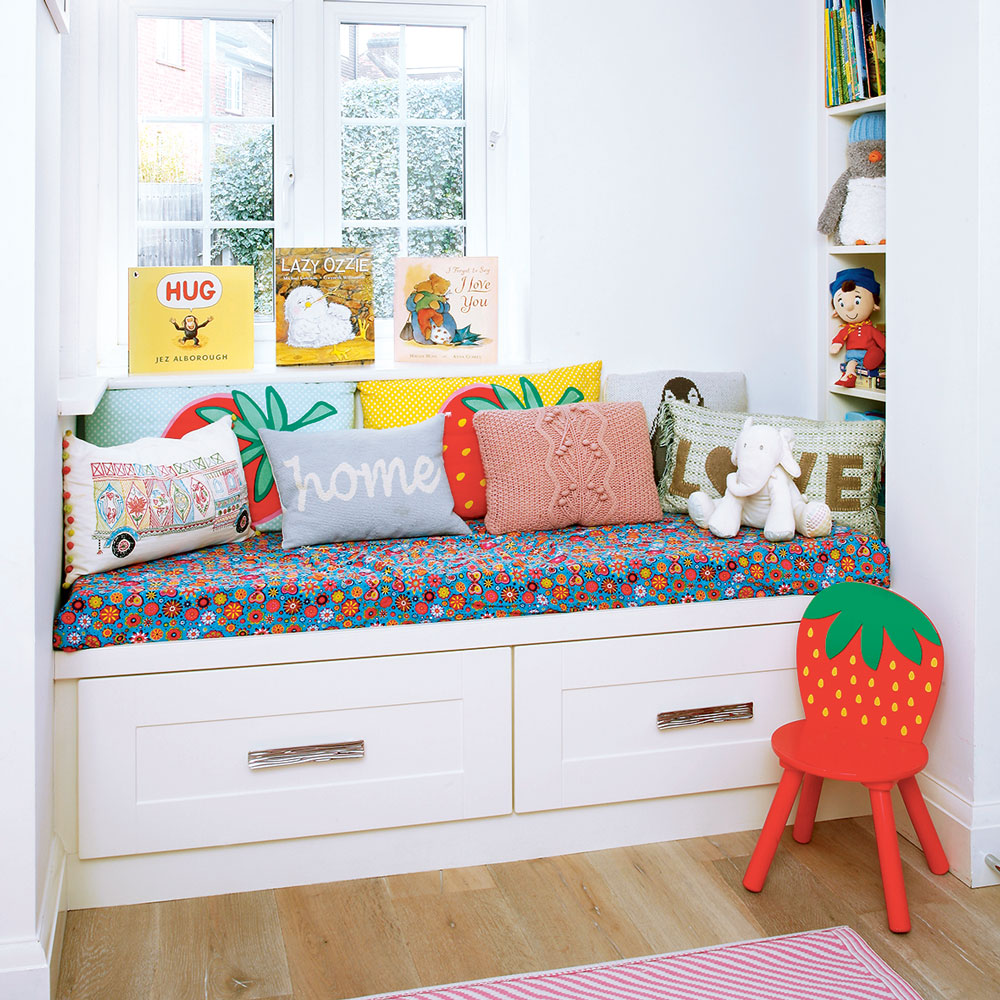
Look out for ways to make storage multifunctional, such as this window seat idea that combines seating with drawers to stow away toys and more.
Multifunctional solutions are especially practical for smaller rooms where you need to make more considered choices when using the space.
22. Create a dedicated space for creativity
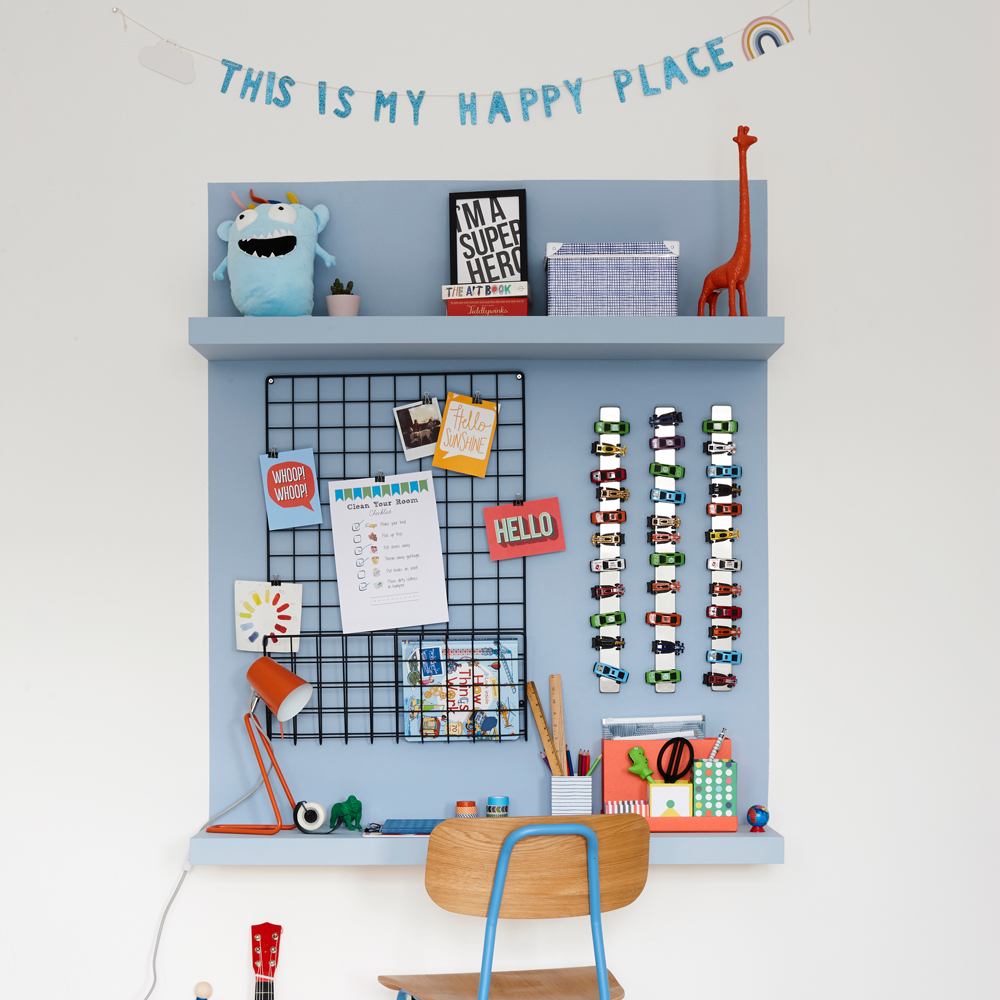
As your children grow, their bedroom will need to accommodate plenty of additional storage space for a desk, books and equipment. Look for multi-functional pieces of furniture that incorporate desk space with plenty of hidden, but accessible, storage.
This smart storage solution is merely a painted panel with floating shelves mounted against it, to create a small but adequate desk area.
Additional magnetic strips have been added to ensure all manner of metal objects can be safely stored off the floor – tiny toy cars included.
23. Explore the possibilities with multi-use hangers

Sometime the simplest of solutions is the best. In this child's bedroom we used Komplemet multi-use hangers from IKEA to storage storage soft toys. Instead of the use intended, storage for scarves and ties, we've utilised the hanger for kids toys.
Not only does it make perfect sense to provide extra toy storage ideas in an accessible bedroom wardrobe, it's also a great way to keep plush items off the floor – ideal for hygiene purposes too.
24. Use portable baskets for storing toys
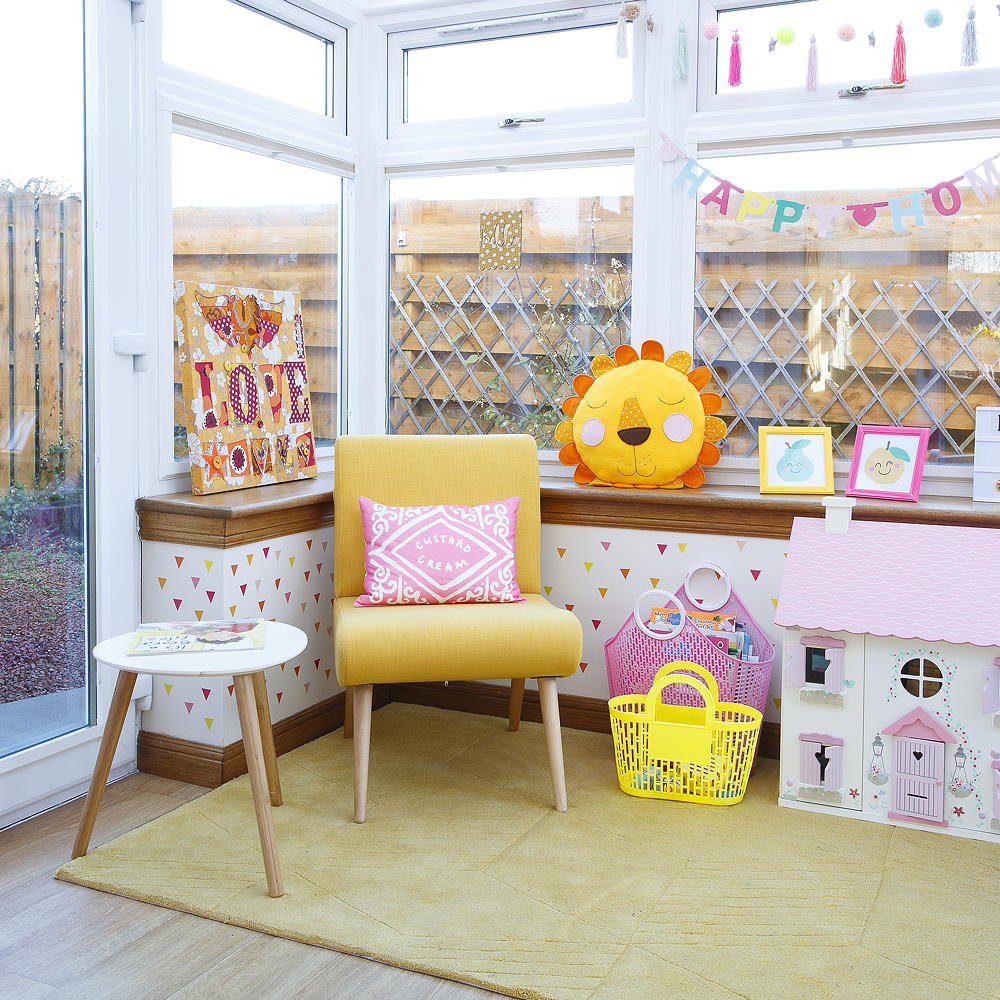
Keep your child's books or doll house toys together in easy to clean jelly baskets. They are perfect if your child's play area sprawls into your living room and you need to be able to move them around to clean.
These toy storage ideas also come in handy when you're packing your little one up for a trip to grandma's and they can't decide want book to take – why not take all of them?
25. Hang tote bags from a windowsill
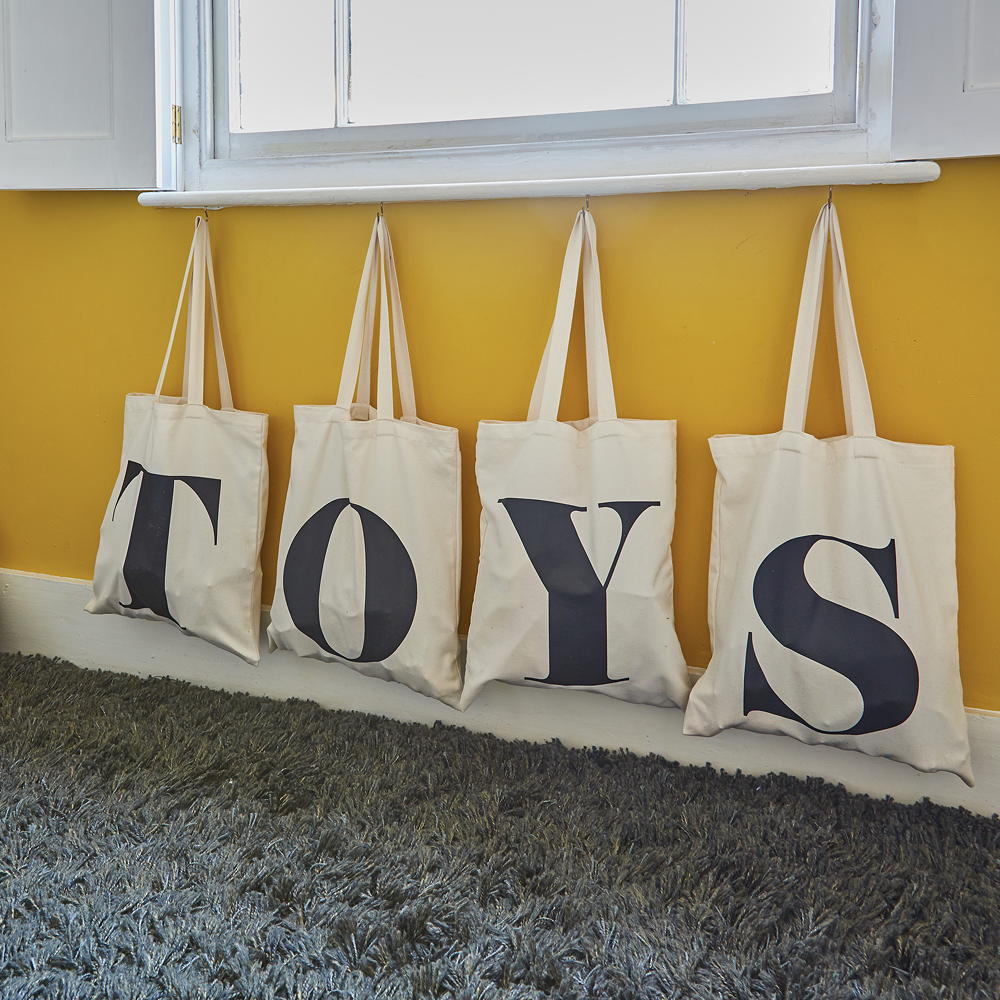
Playroom storage ideas don't need to cost a fortune, if you are looking for a unique way to keep your kids toys in order but are a little short on funds have a go at this tote bag storage idea.
Use any old canvas bags that you might have hanging around the house and cover them with a splash of fabric paint or screen print some letter to personalise them. Next attach some hooks into the underside of the windowsill and simply hang the filled bags from them.
26. Add in plenty of wall storage

Team less-frequently accessed toy storage ideas, such as an under-bed basket, with easy-to-reach containers, baskets and peg rails so that everything can be cleared off the floor quickly and easily. Bedroom walls are a great way to use every inch of space for storage potential.
27. Repurpose old crates
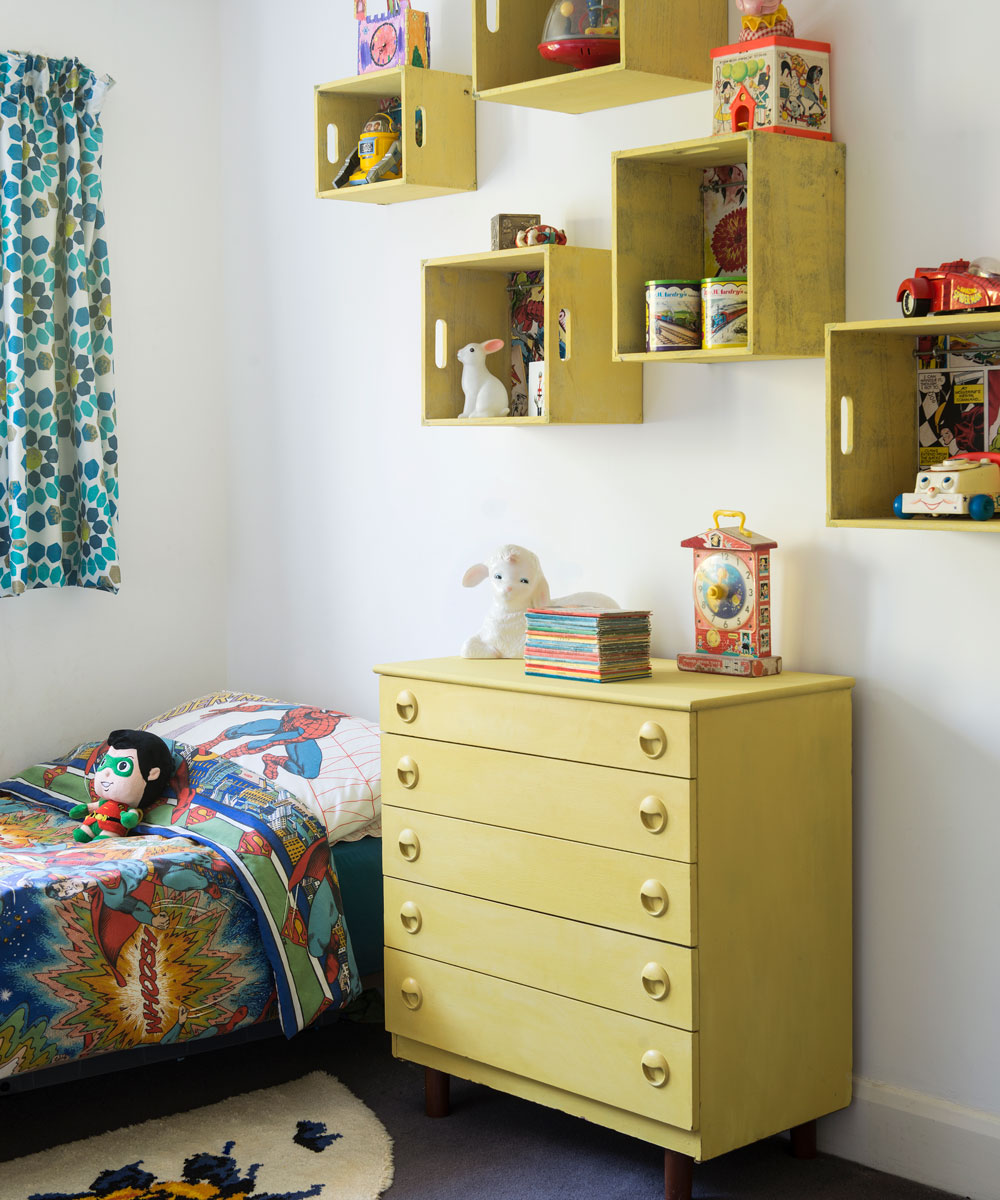
In small bedroom ideas, make the most of walls for storage. Wall-hung shelves or units will not take up floor space, leaving it available for playing. Open shelves will keep everything within easy reach and will make tidying a quick and easy task.
Combine storage with display by using crates as wall-hung, box-style shelves. Each of these boxes has been painted to match a chest of drawers, creating an eye-catching practical feature space against a white backdrop.
The boxes have been lined with a decorative paper and then filled with favourite toys and accessories, proudly visible but nice and neat. The tops of the crates create additional display shelves too.
28. Streamline with smart cabinets
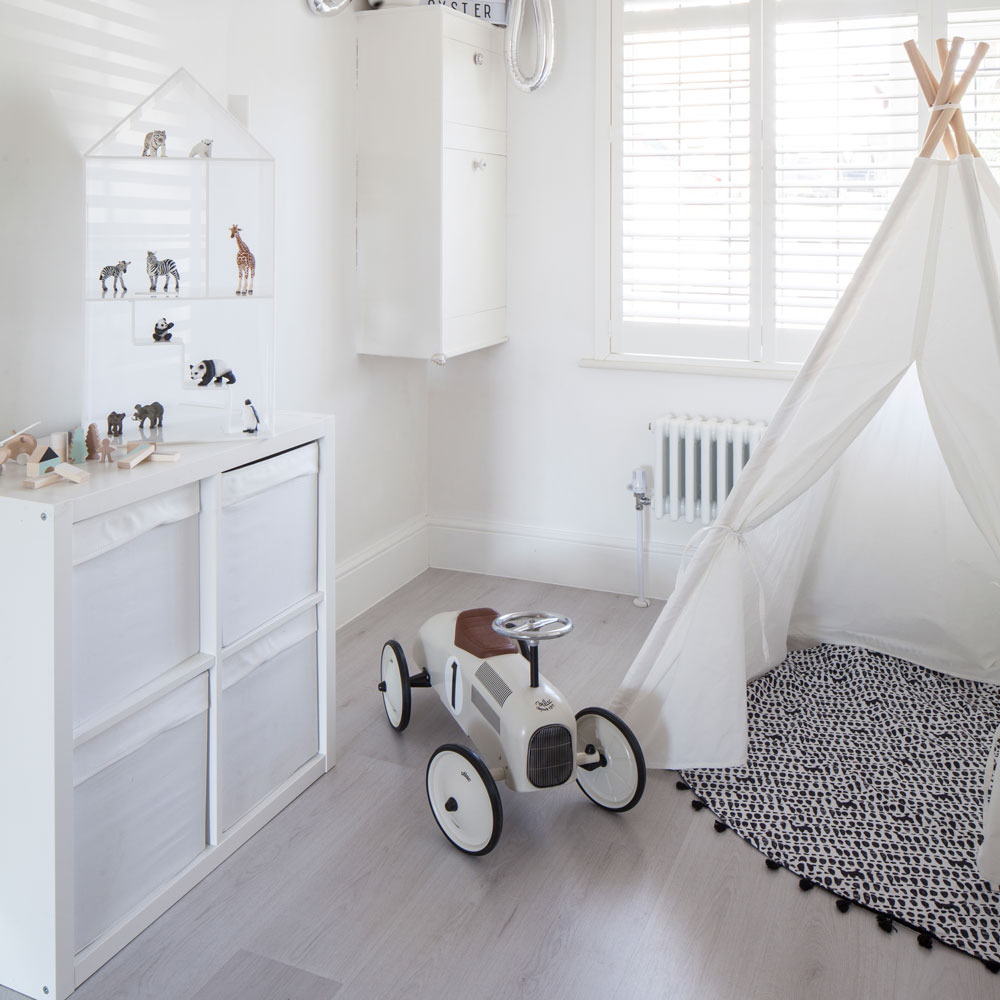
If you prefer a more streamlined look, incorporate wall cabinets and chest of drawers for toy storage ideas that can be hidden behind closed doors. Look for shelves that feature hooks or peg rails for a little additional hanging space.
29. Include under-bed storage

Ideally, look for childrens beds with built-in storage. Bunk bed and divan beds will provide convenient drawers at a height perfect for little arms, and many feature sliding panels for easy accessibility that allow you to have a bedside table next to the bed. This also keeps you from having to drag out unwieldy storage systems.
However, if the specific look of a divan bed does not fit into your chosen design, go for a bedstead that is high enough to stash small storage boxes underneath. Wicker baskets peeping through can keep a bedroom feeling rustic and homely.
30. Add in moveable storage for versatility
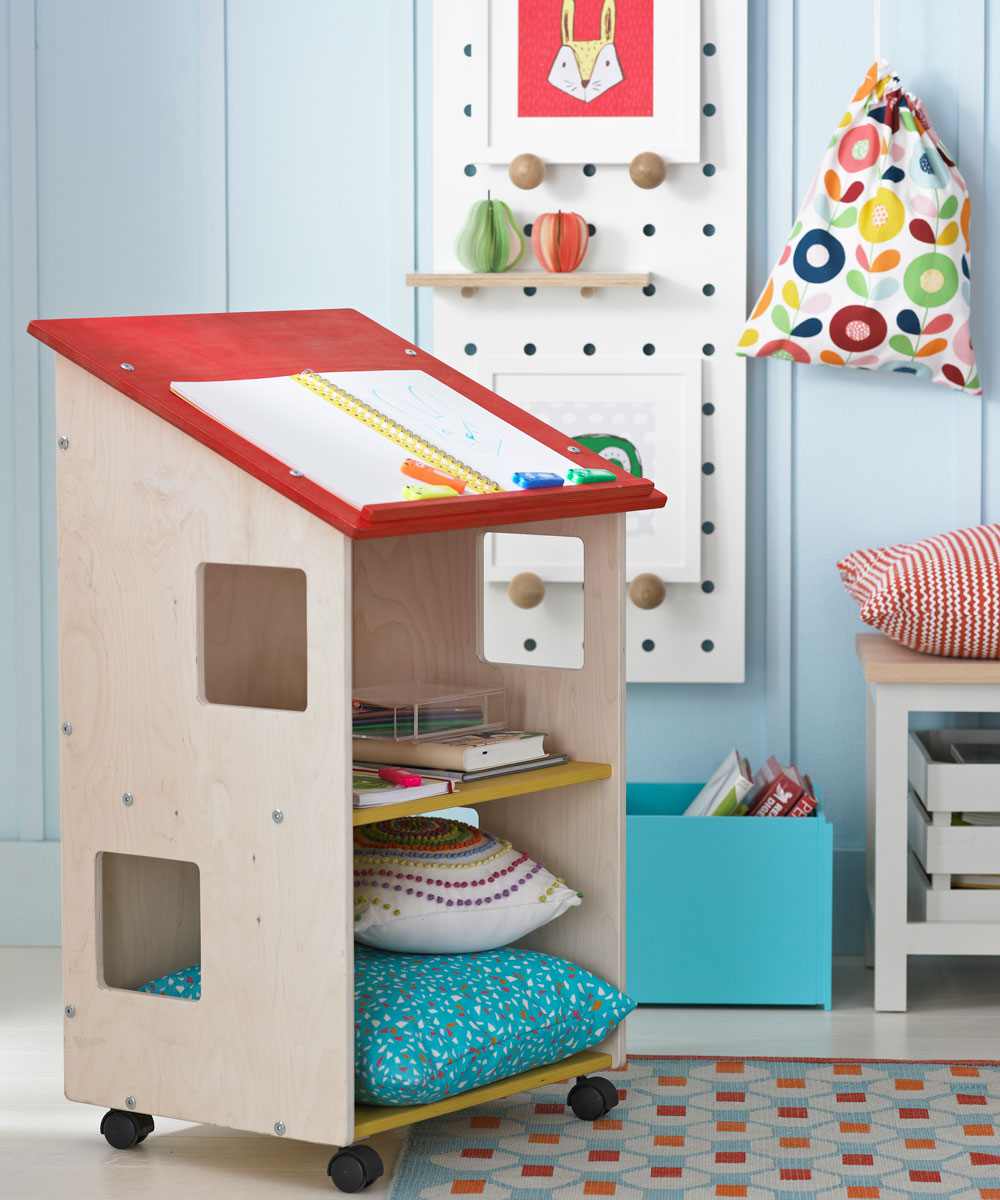
As we encourage little ones to express themselves through art and crafts, we need to provide the perfect place for all the mess that goes with it. By creating a dedicated workstation it allows them to get creative but remain tidy at the same time.
Look for toy storage ideas that can be adapted as your child’s needs change. Adjustable shelving allows for different uses, from big blocks to DVDs to ring binders. Tidying their own room will be impossible if they can’t reach. Use higher storage for things like bedding that only you need access to.
31. Place beloved toys high on floating shelves
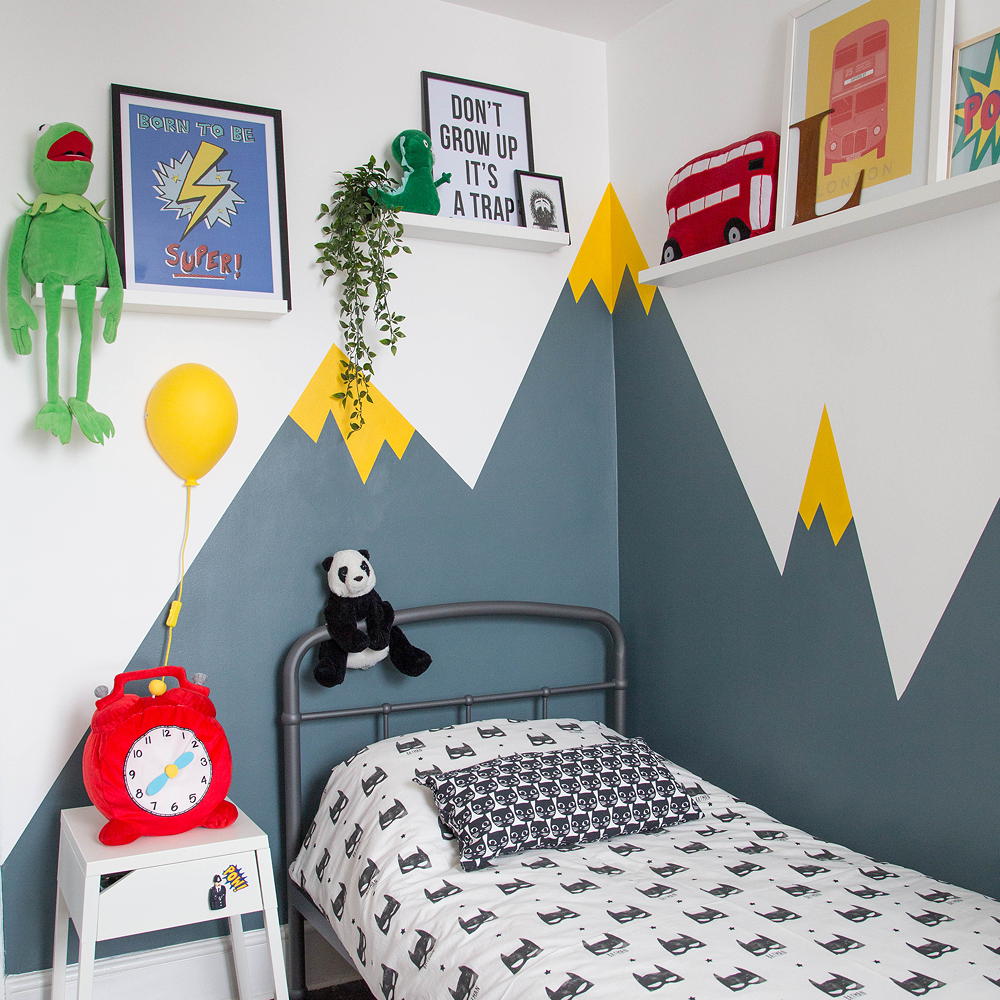
As your kids grow up there will be certain soft toys that they might not play with everyday, but still can't bare to be parted from.
Find a permanent home for their fuzzy friends by positioning them on top of a floating shelf. These style of shelves are perfect for storing all sorts of keepsakes, position them at staggered heights to create an eye-catching display.
32. Install a magnetic board
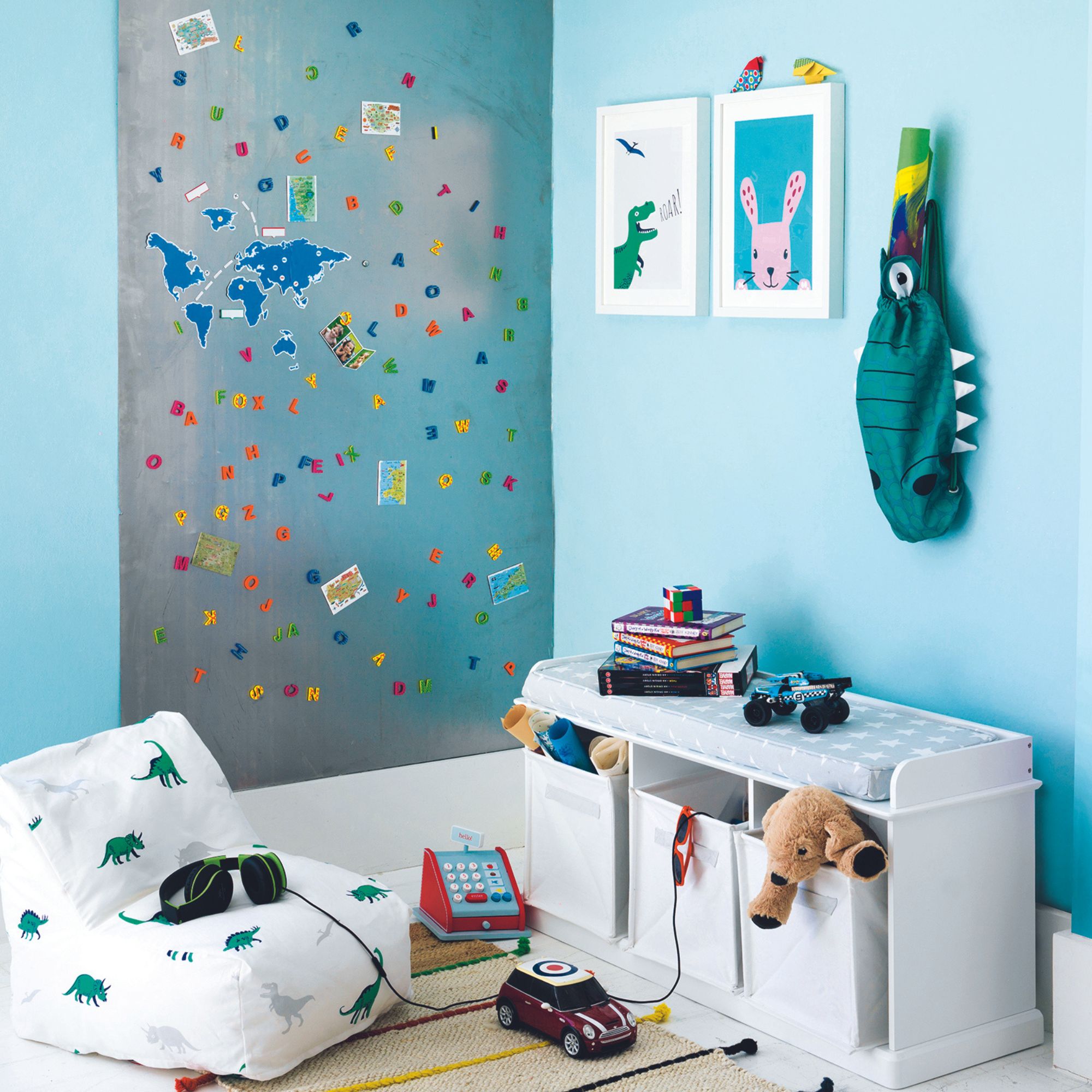
Toys come in all shapes and forms, but if your child is particularly fond of magnetic letters, a magnetic board can really save you some space. This can be installed on any free wall in your home and will give your child a dedicated space to practice their spellings, write notes to their siblings, or just go wild!
A magnetic board could also be a great way to keep smaller toys easily accessible at all times. Even if these toys aren’t magnetic, you could buy your own magnets like these 40 Pack Extra Strong Magnets from Amazon and glue them onto the toys. By doing this, you’ll know exactly where they are, and they won’t take up any unnecessary space on shelves or in toy baskets.
33. Build a toy den
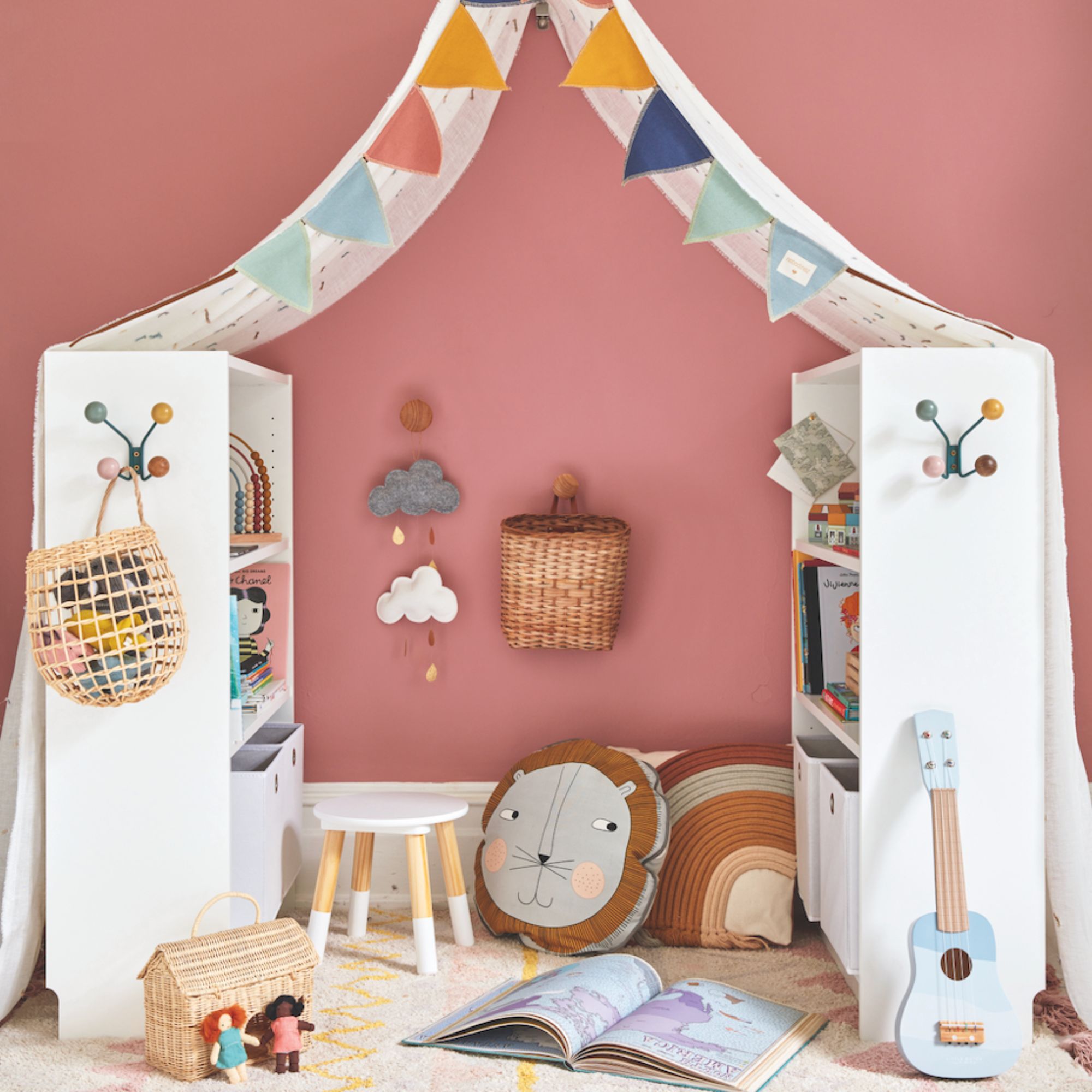
Kids love dens, right? Although you can buy ready-made teepees and tents, one of the best ways to build a toy den and instantly gain extra storage is to use two bookcases, a large bedsheet, and a hook or pole to hang it onto.
By using the bookcases as the sides of the den, you can instantly give your kids the secret space they always wanted while storing all of their clutter in this one space. You can shove anything from books to toys in these bookcases, and you can then add extra hooks and decorations onto the side if you need more space.
34. Use coat hooks
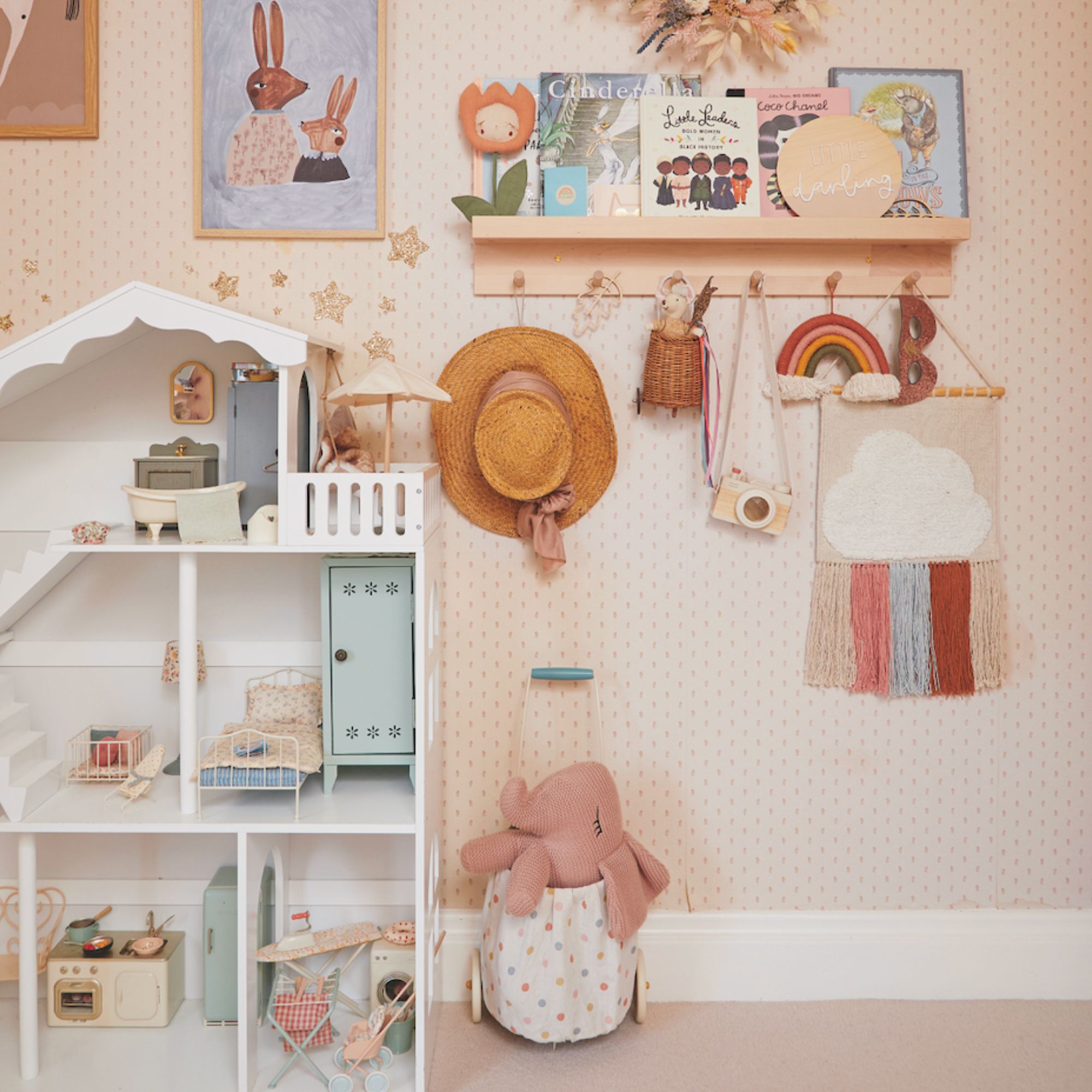
There’s a high chance that you have coat hooks in your hallway or under your stairs, but next time you head to the DIY shop, it might be a good idea to stock up on a few more. Although separate hooks can be placed around living rooms and children’s rooms, they can often seem disjointed.
If you want to add decoration and seamlessly integrate some toy storage, opt for coat hooks that can hold backpacks, fancy dress costumes, toy baskets, and more. And if you really look hard enough, you might even find a coat hook that comes with a shelf on top for extra storage.
FAQs
How do you store large amounts of toys?
Getting rid of toys is never going to go down well, but if things are getting out of control, it's worth donating any that don't get used very often. 'Children get easily overwhelmed when they have too much to choose from,' comments Siân Pelleschi, founder of Sorted! and APDO president.
'Think of every time you go into a restaurant and they have over 100 items on the menu – it’s really hard to choose what to have. The same goes with toys for children. Reduce down what they have in their playroom storage ideas so that the choice is easier and watch their imaginations go wild!'
Sian also recommends reducing the number of duplicates you have of any one type. For instance, it’s fine to have lots of colouring pens if they’re being used all of the time however if you have three similar board games tucked away in your toy storage ideas, then choose the one the children play with the most and let the others go.
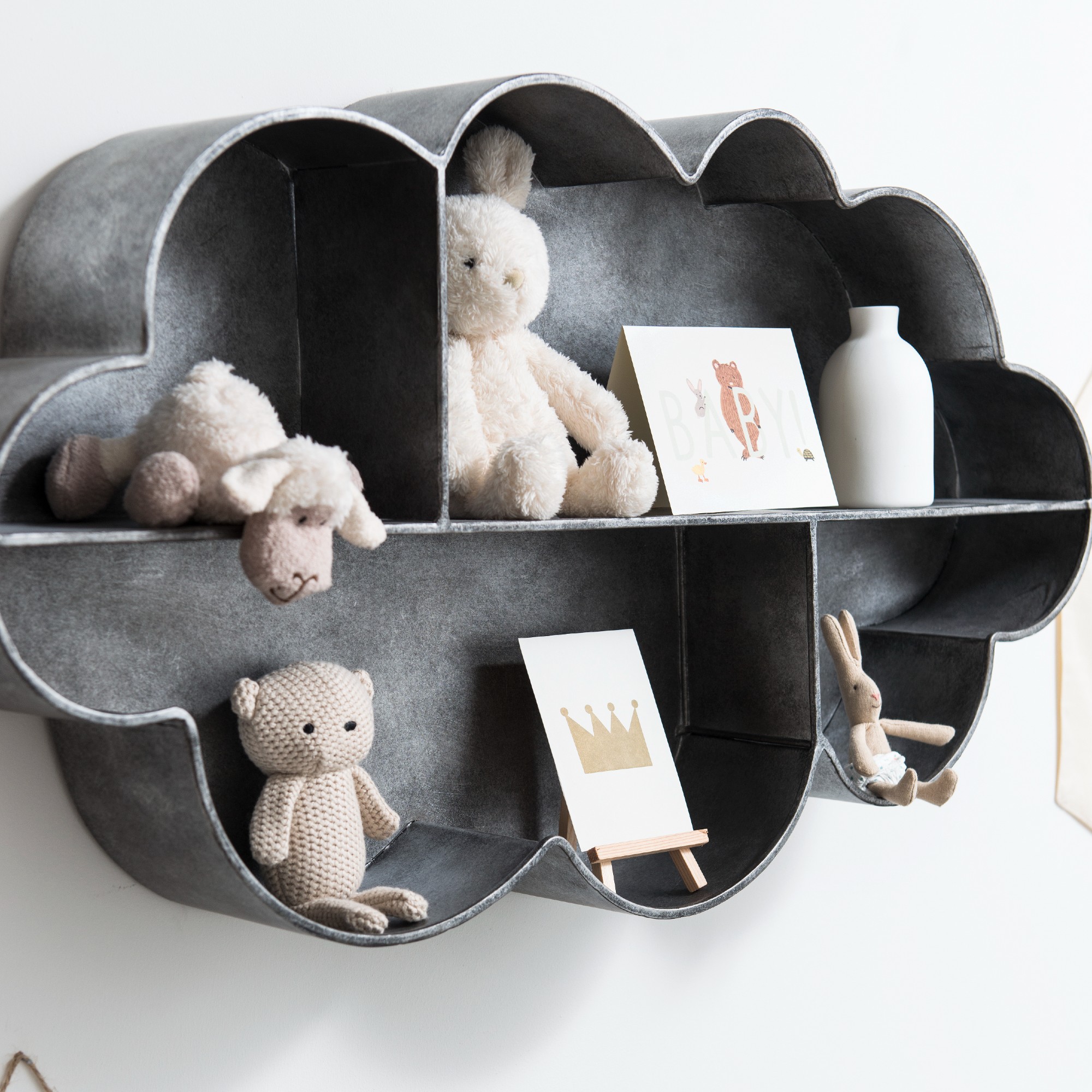
How do you store toys in a small living room?
How do you store toys to make more of space in a small living room? 'If you’re strapped for space, finding multi-purpose storage units will make stashing toys much easier,' says Simon Glanville from A Place for Everything. 'Instead of a large coffee table in the living room, you could go for a big, beautiful trunk, which can double up as coffee table and a place to stash all your children’s toys.'
'If you’re looking for something more versatile that adds to the aesthetic of your home a set of leather or rattan boxes or cubes can be perfect. Ideal for storing away cluttered toys and make great occasional tables that allow easy access for the little ones.'
What is the best way to organise toys?
'Children’s toys won’t stay tidied away for long so choose a storage solution that’s easy for you, but also easy for your little one,' advises Simon Glanville from A Place for Everything. 'Something like an oversized basket means you can quickly tidy their toys when you need to, but also that your child has easy to access when it is playtime.
'Making tidying-up fun offers a great way to encourage kids to clear away the clutter when it's bedtime. LEGO's Giant Lego Storage Boxes and drawers make for a fun way to store toys and are available in a range of homely hues such as shades of grey, white, aqua and azure.'
'Children’s bedrooms are where you can be more creative with toy storage ideas' Simon enthuses. 'Using colourful and interesting storage boxes will encourage children to get involved with tidying up – and make it fun! Pick plains or patterns, neutrals or brights and theme your toy storage in different colours or with coloured stickers, or if they're younger use photos so at a glance they're easy to identify.'
How do I maximise storage in my kids' room?
Kids' rooms are full of toys and clutter, but to maximise the storage in a child’s room, you need to take a step back and look at the free space in the room as a whole.
Sure, the floor may be cluttered with toy baskets and rogue shoes, but what about the walls? If they’re empty, save for a few photo frames, shelves and wall-mounted furniture will help you maximise your storage options without making the room look even more cluttered.
Then take a look at the doors - from cupboard doors to the main door. If they don’t have anything on them, use over-the-door hangers and hang baskets or clothes from them.
The idea is to use all available space without making it look too cluttered and without impacting the practicality of the space.
Say goodbye to the LEGOs in your feet in no time.
Tamara was Ideal Home's Digital Editor before joining the Woman & Home team in 2022. She has spent the last 15 years working with the style teams at Country Homes & Interiors and Ideal Home, both now at Future PLC. It’s with these award wining interiors teams that she's honed her skills and passion for shopping, styling and writing. Tamara is always ahead of the curve when it comes to interiors trends – and is great at seeking out designer dupes on the high street.
- Lauren BradburyContent Editor (House Manual)
- Sara HesikovaContent Editor
- Millie HurstSenior Content Editor
